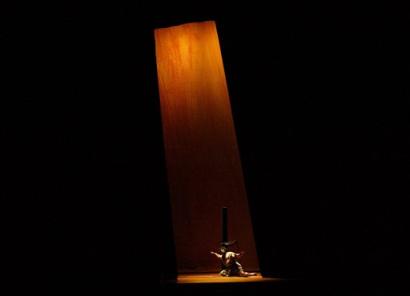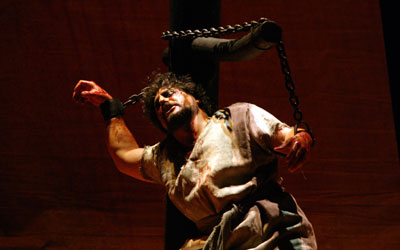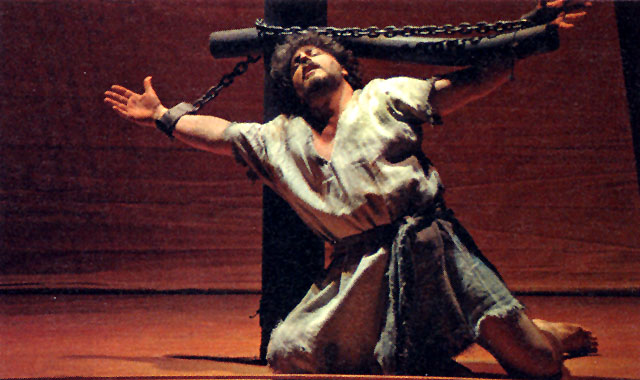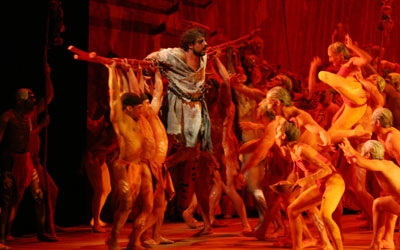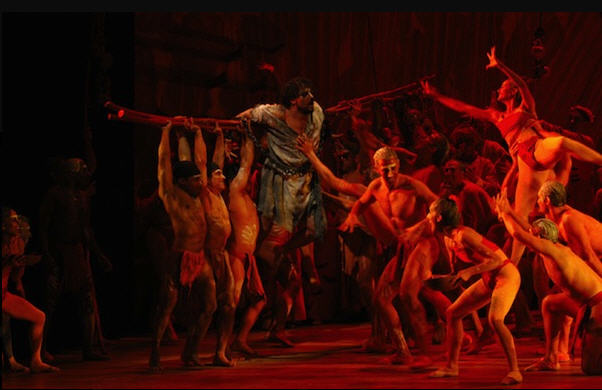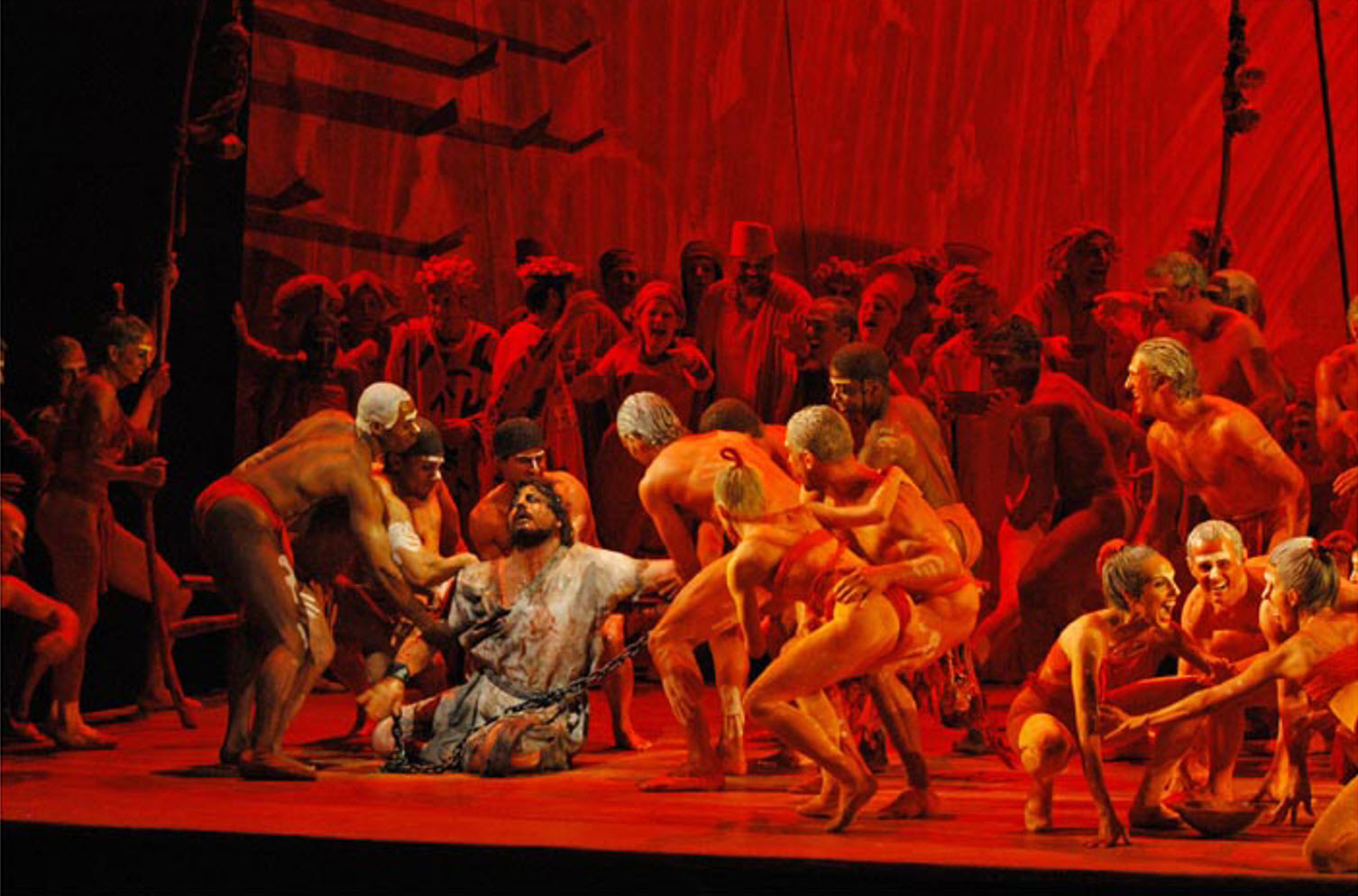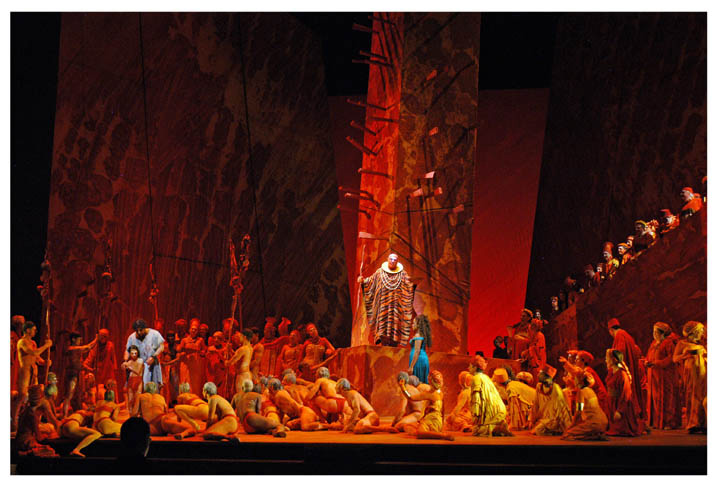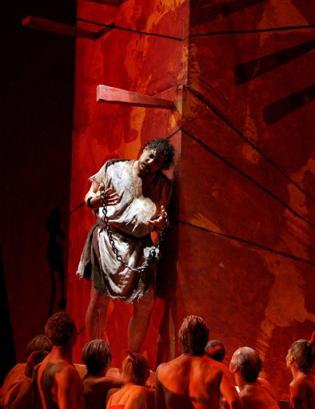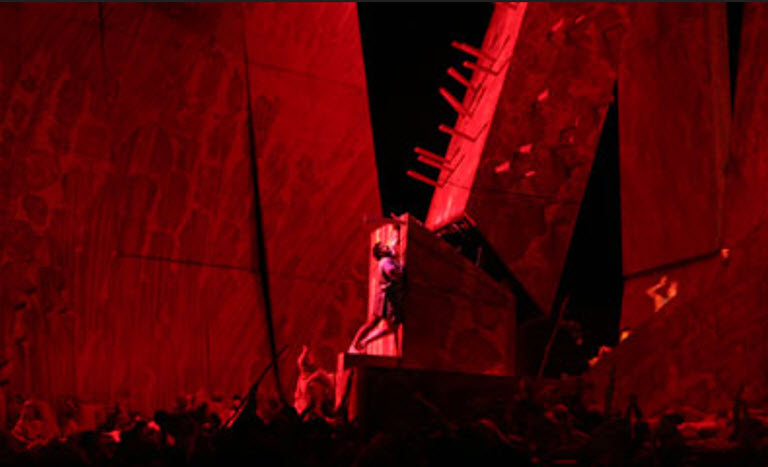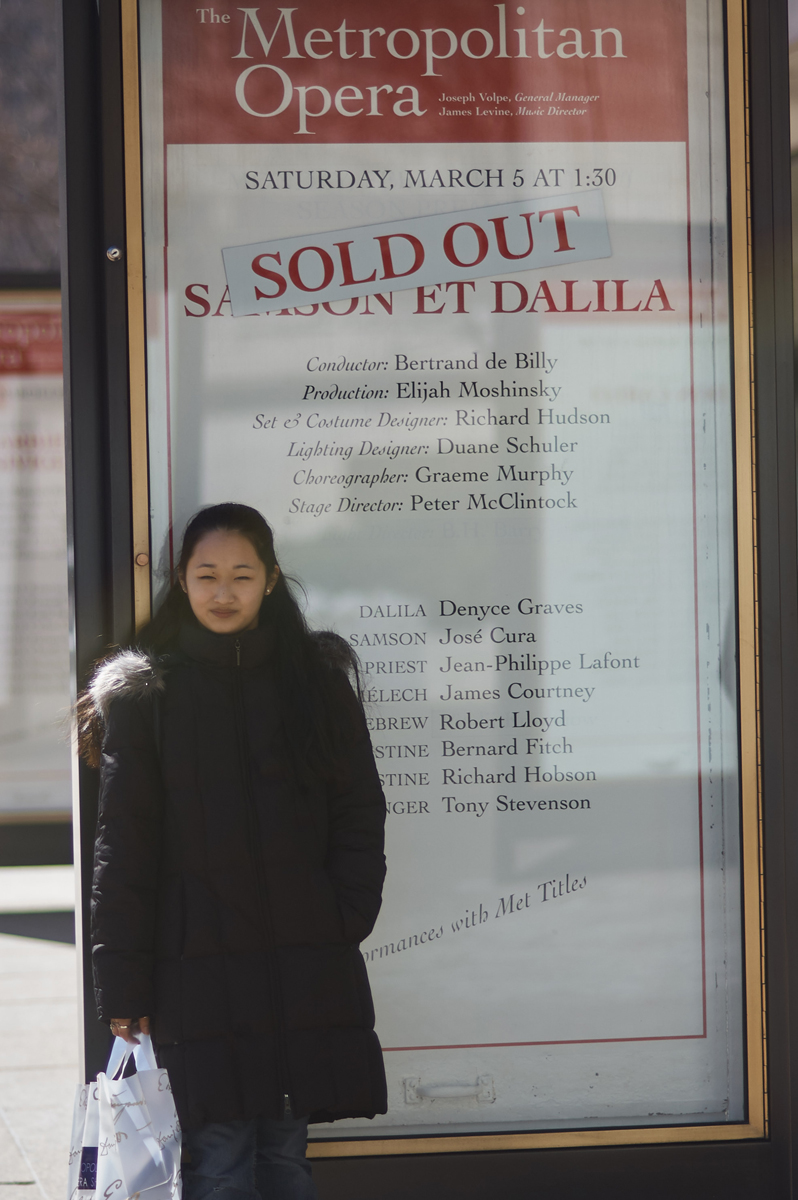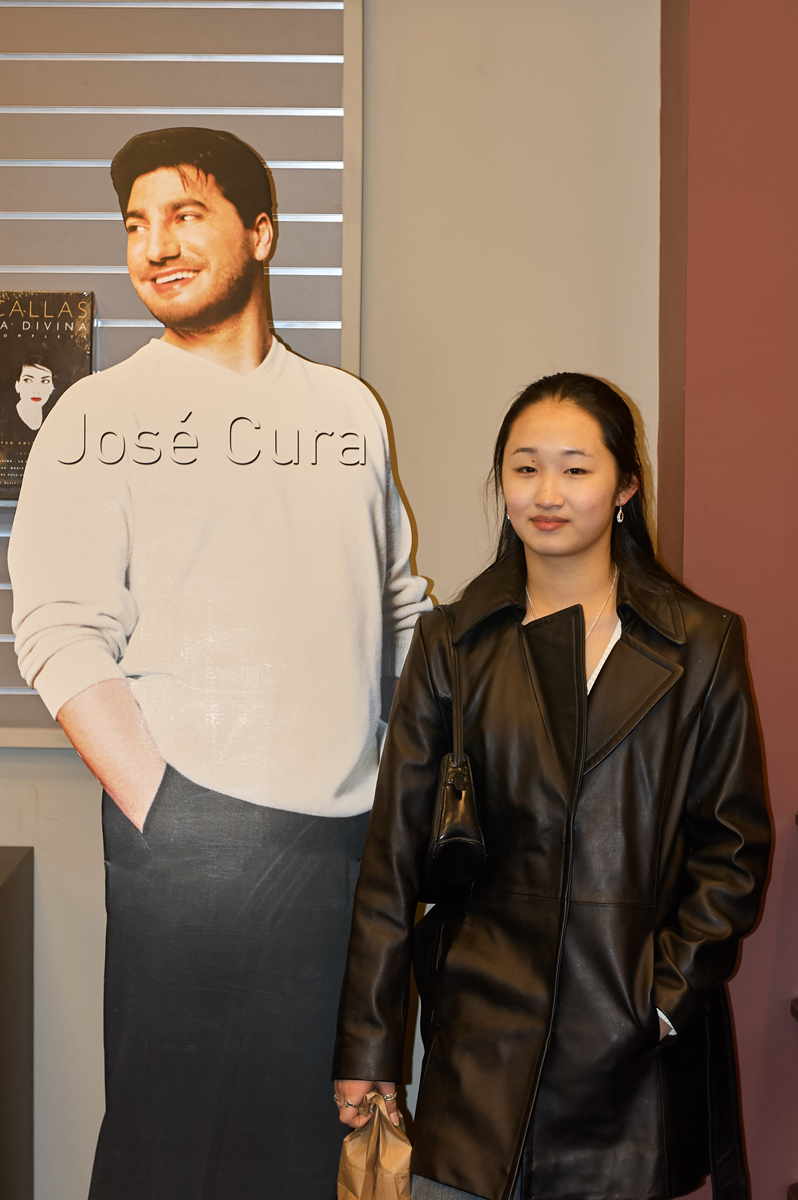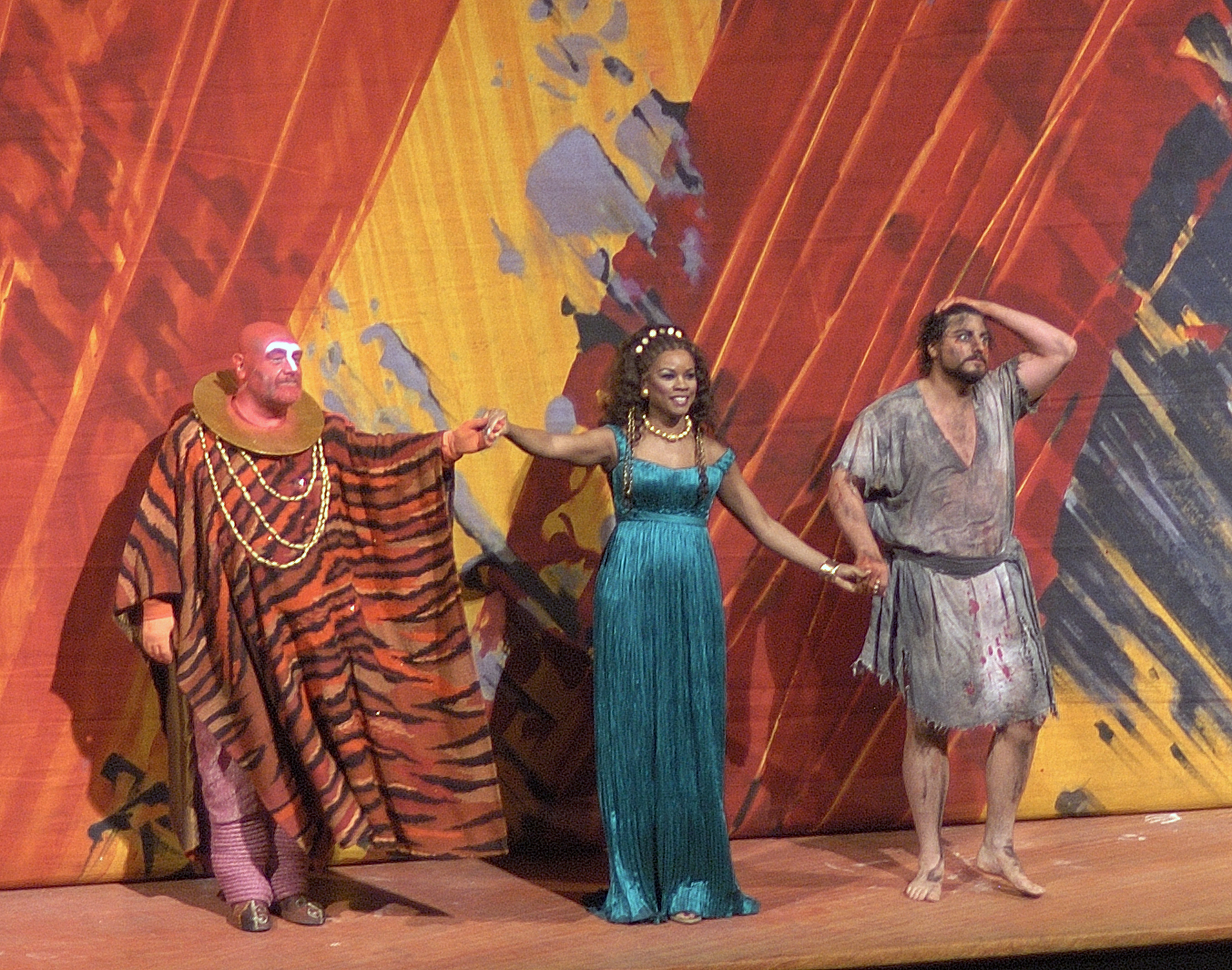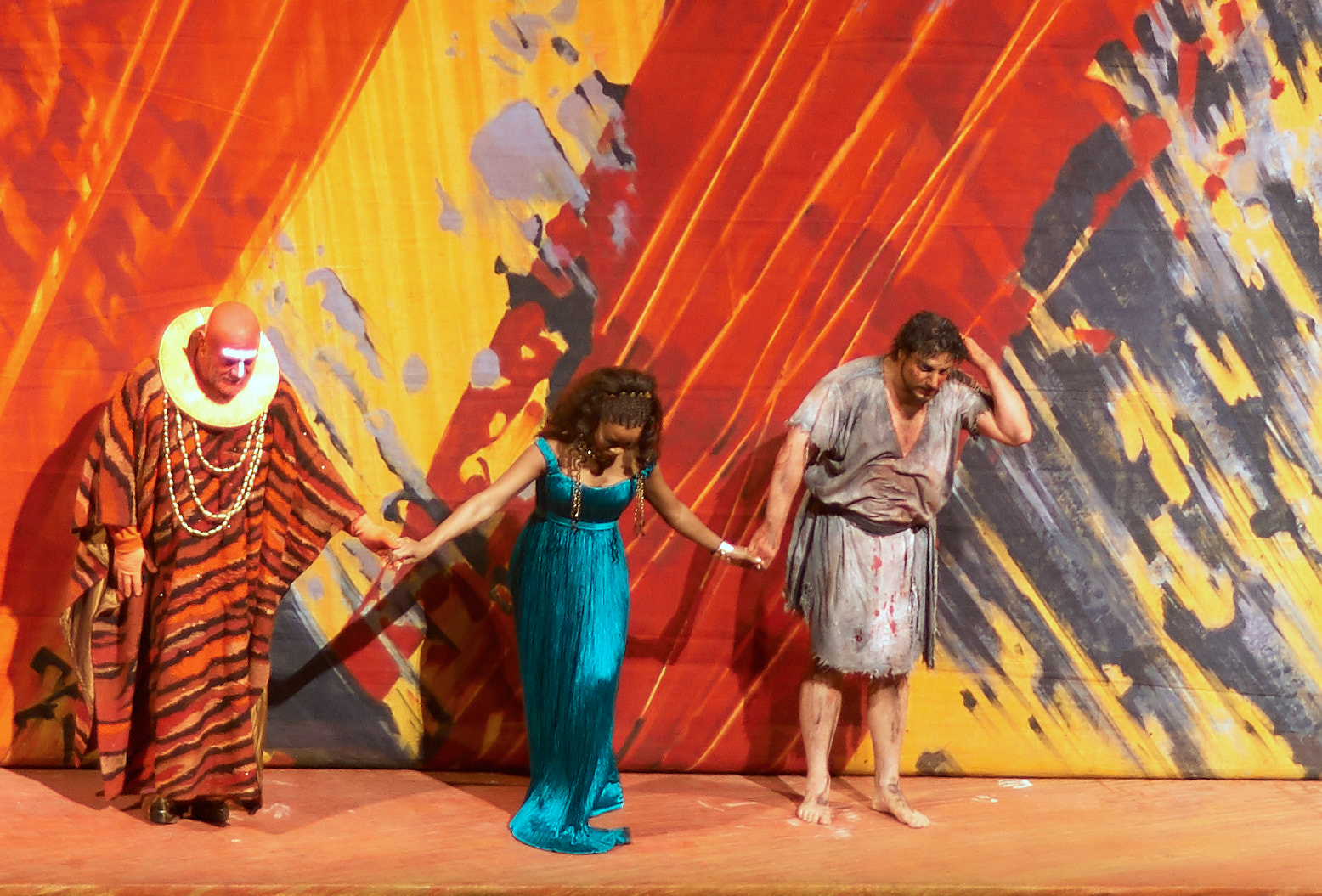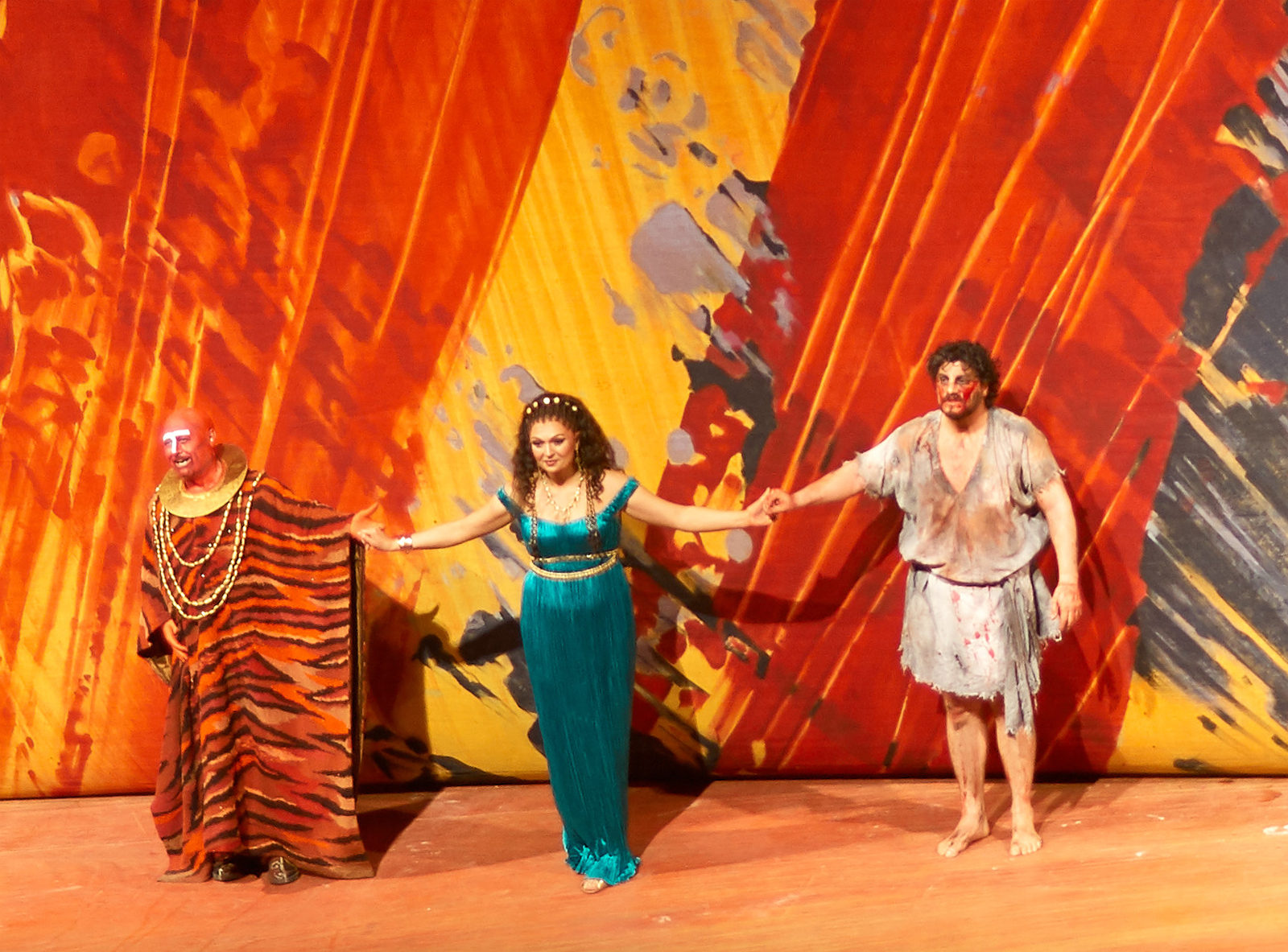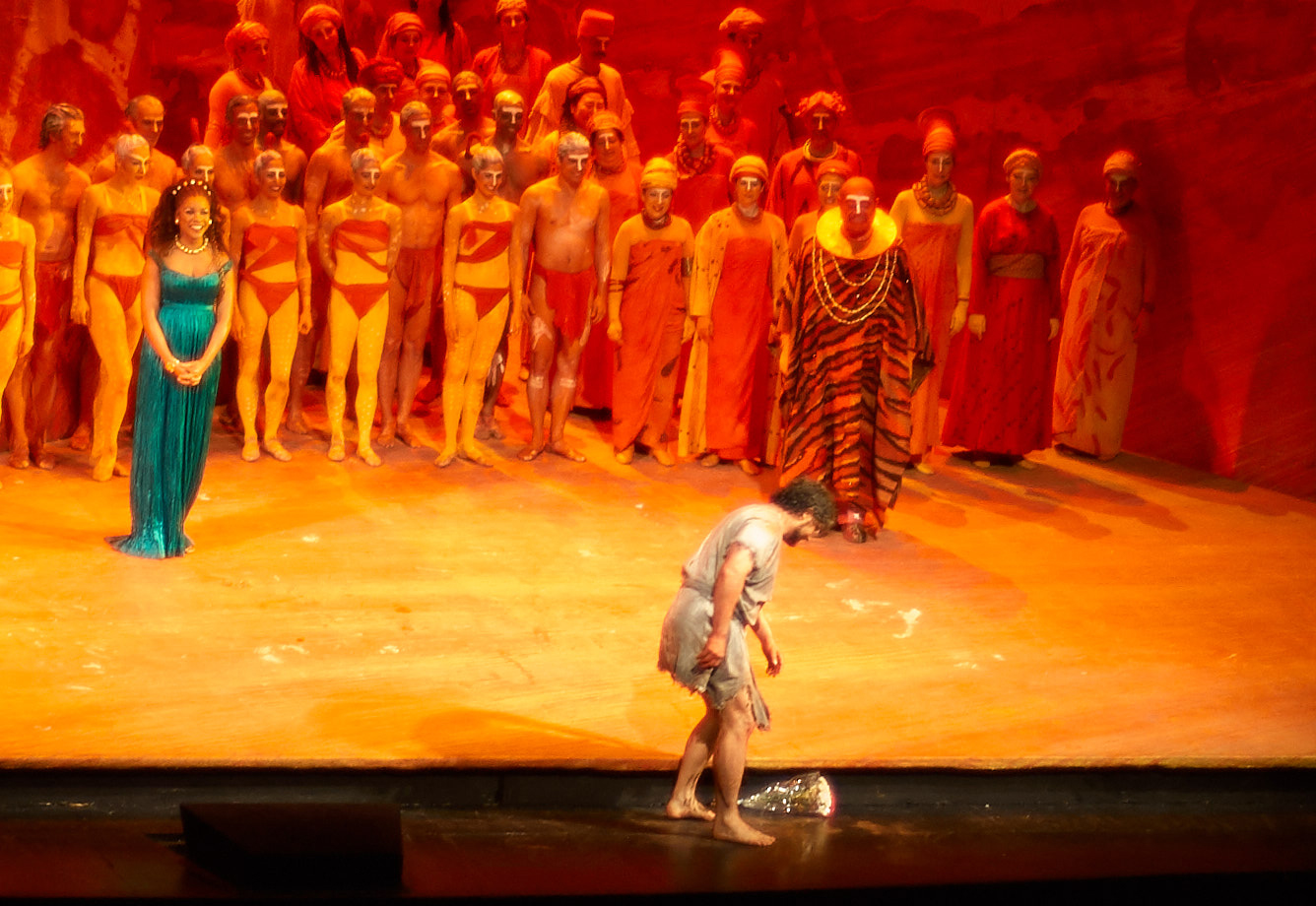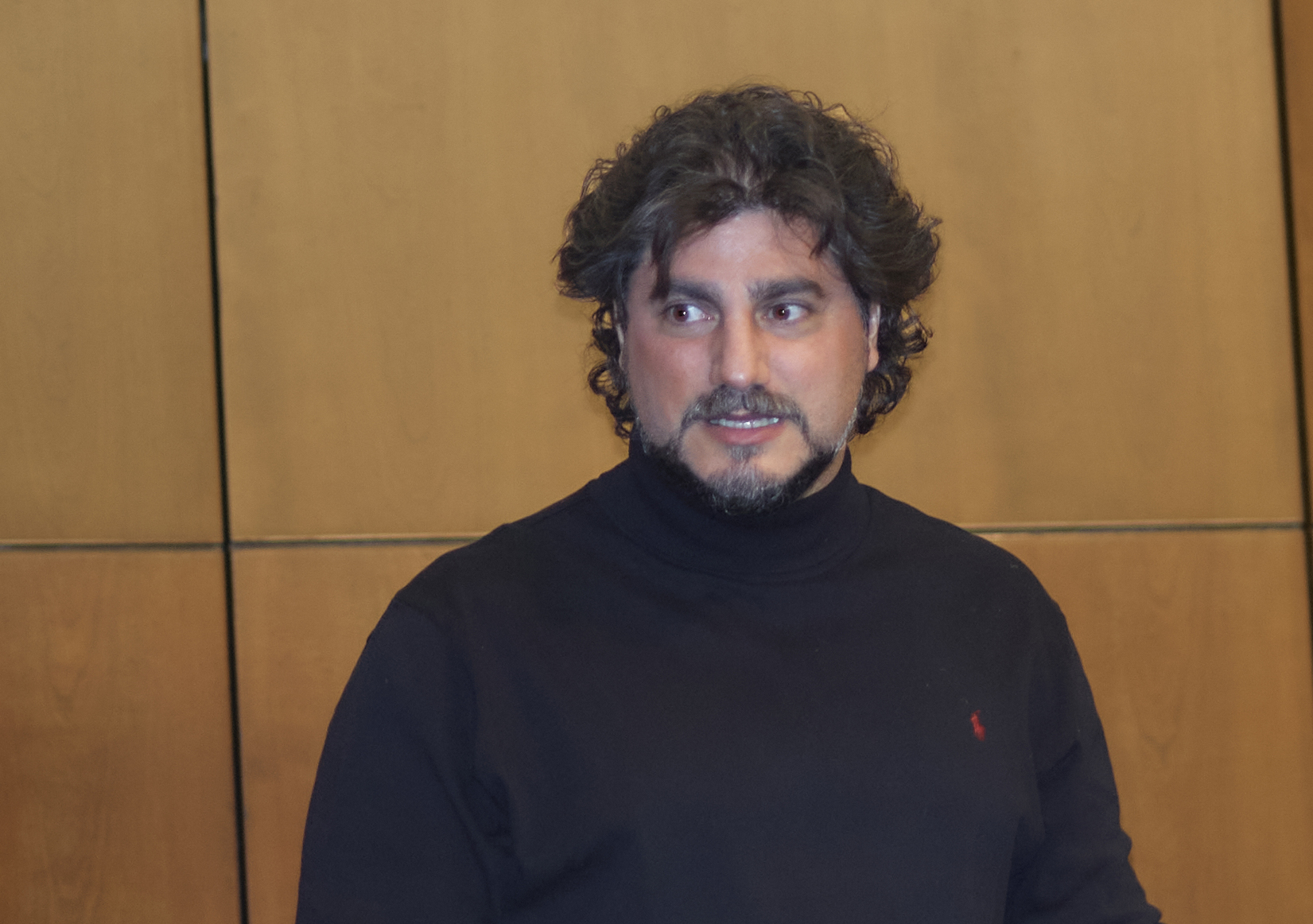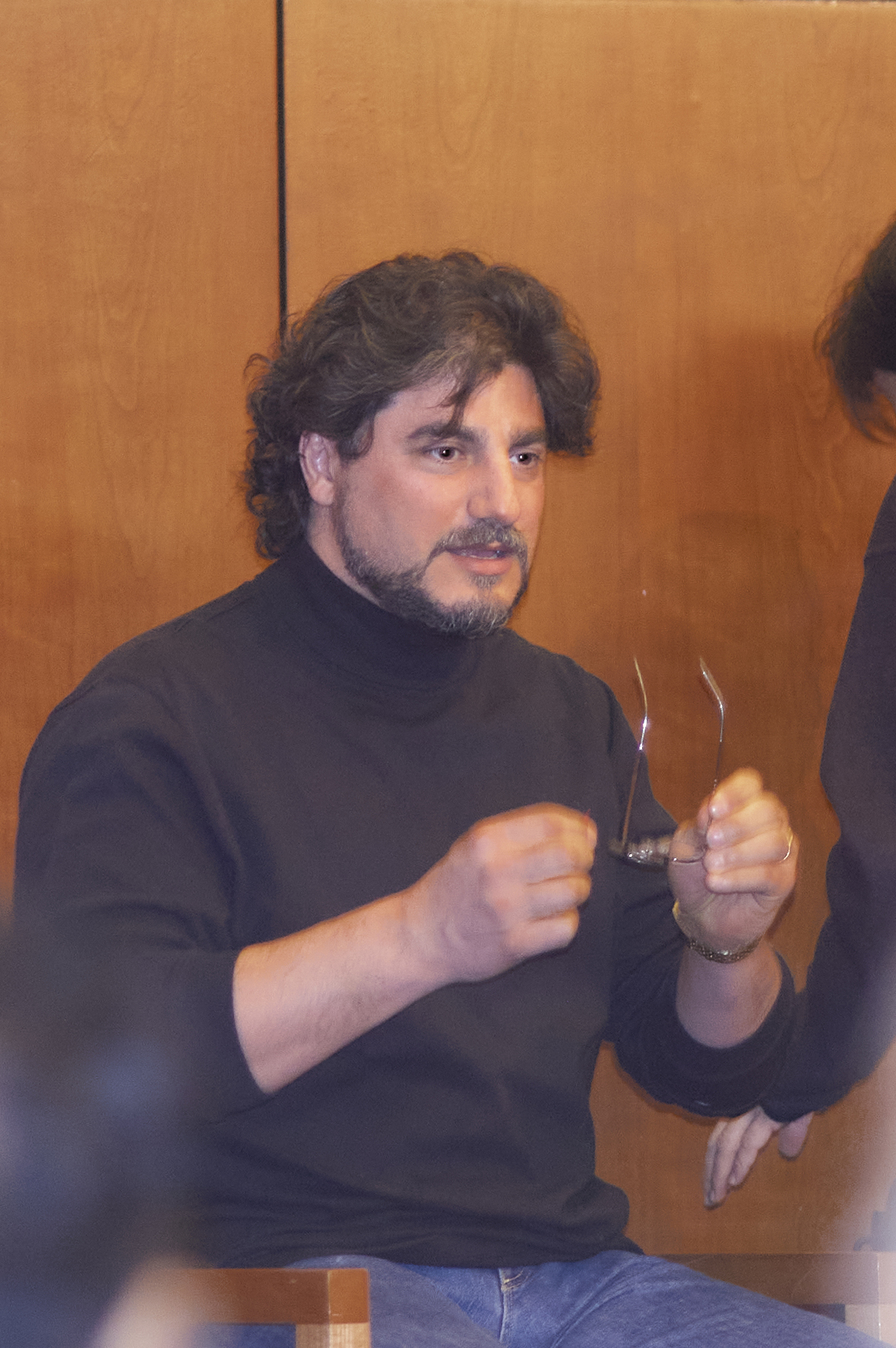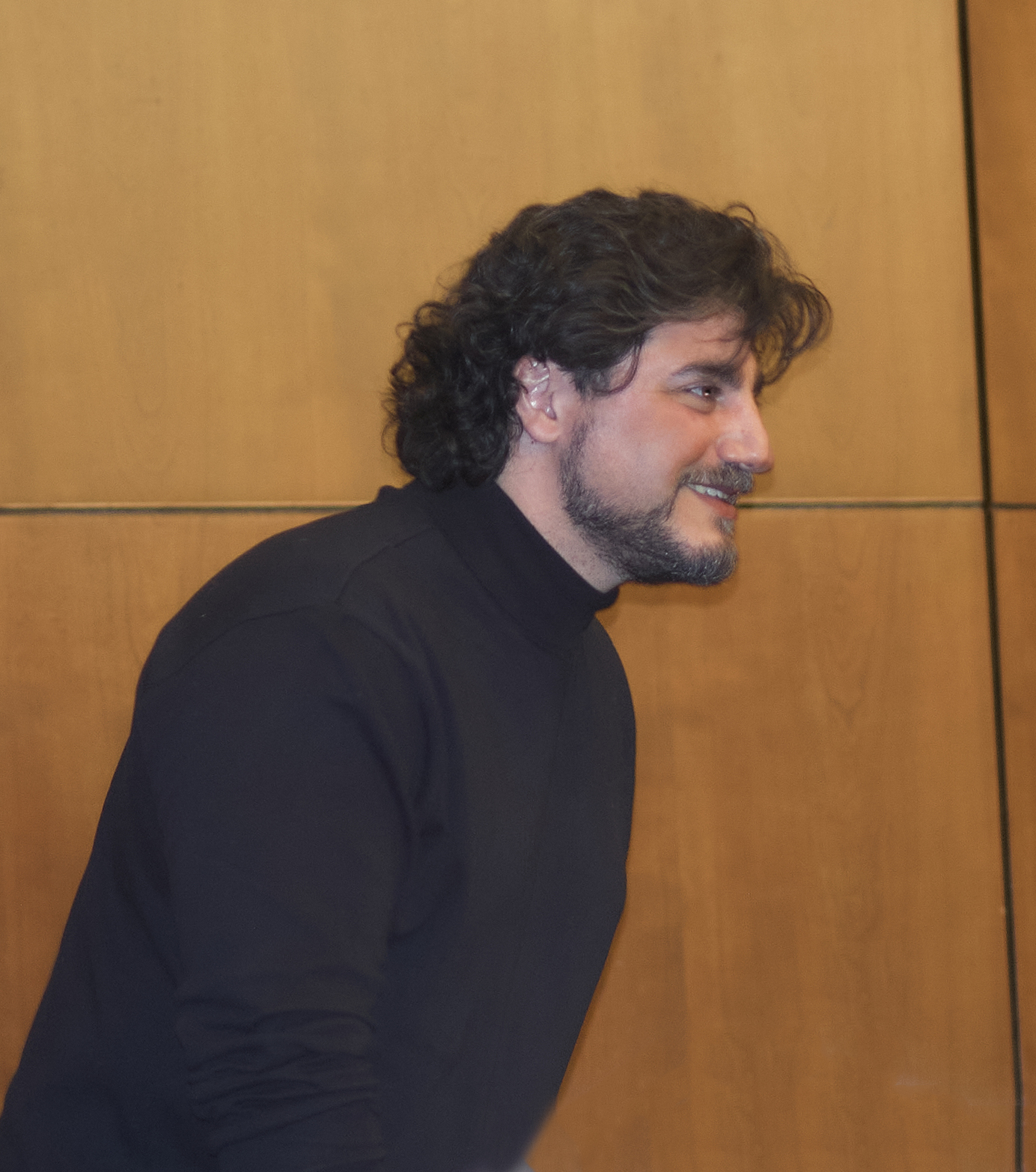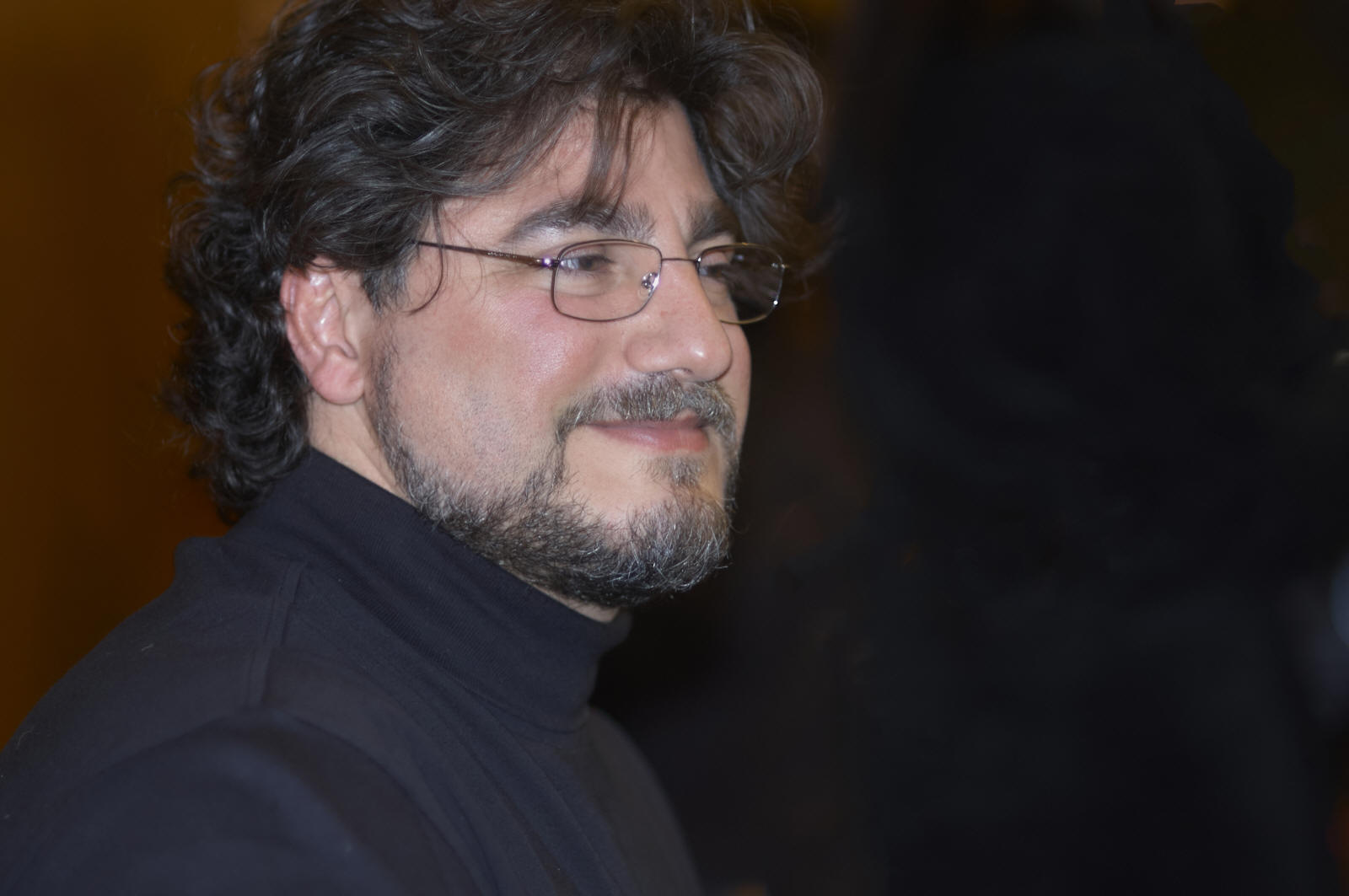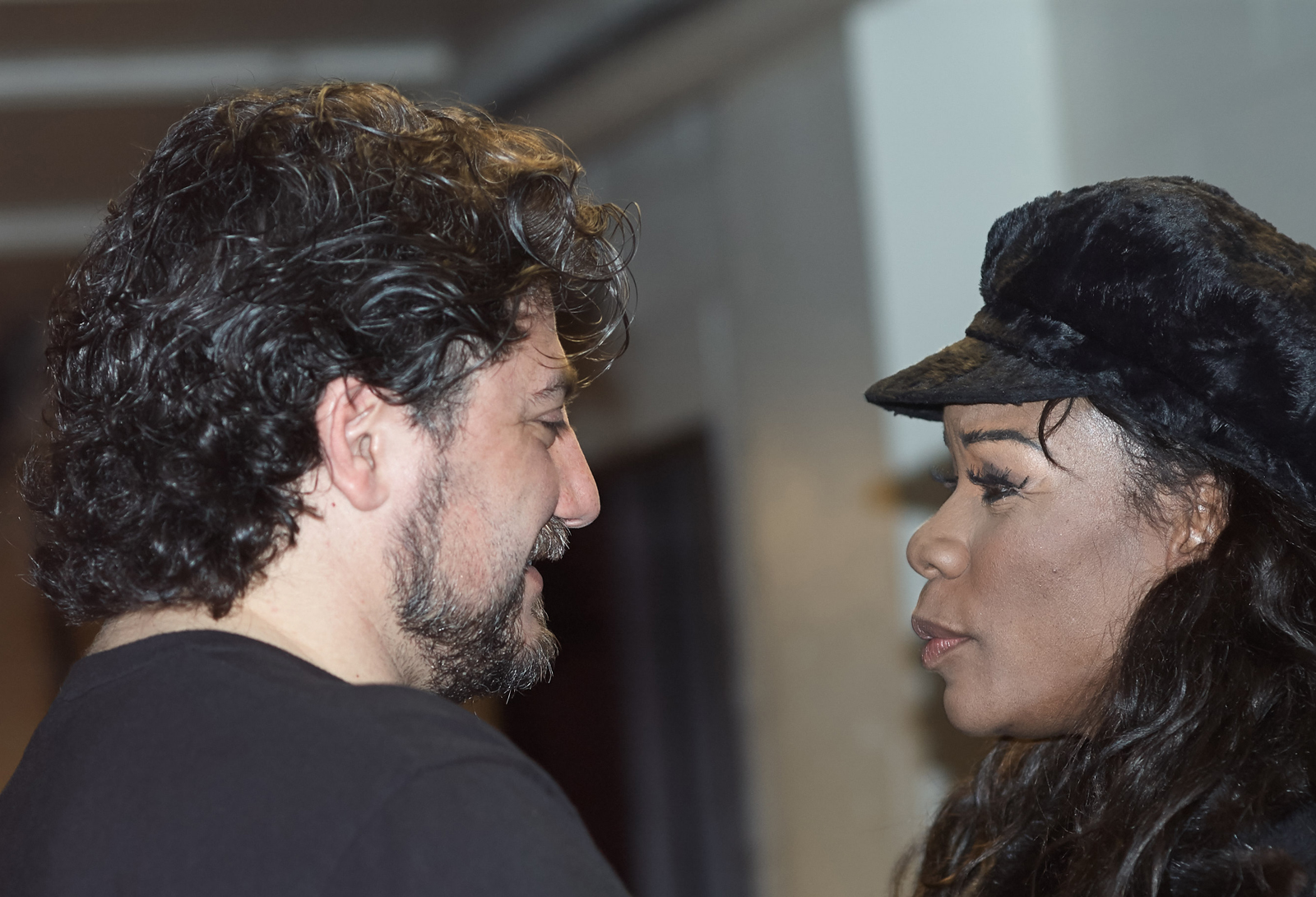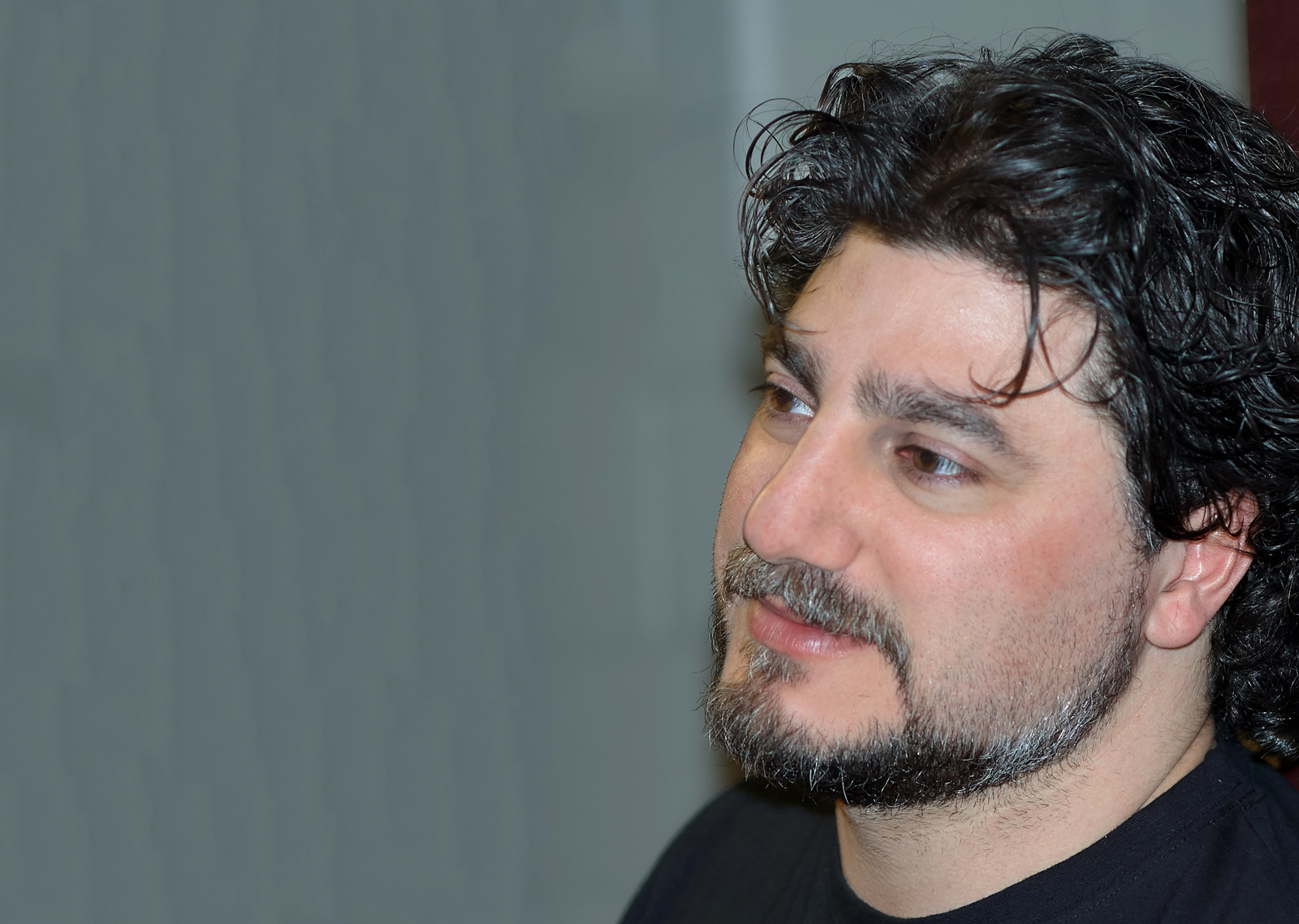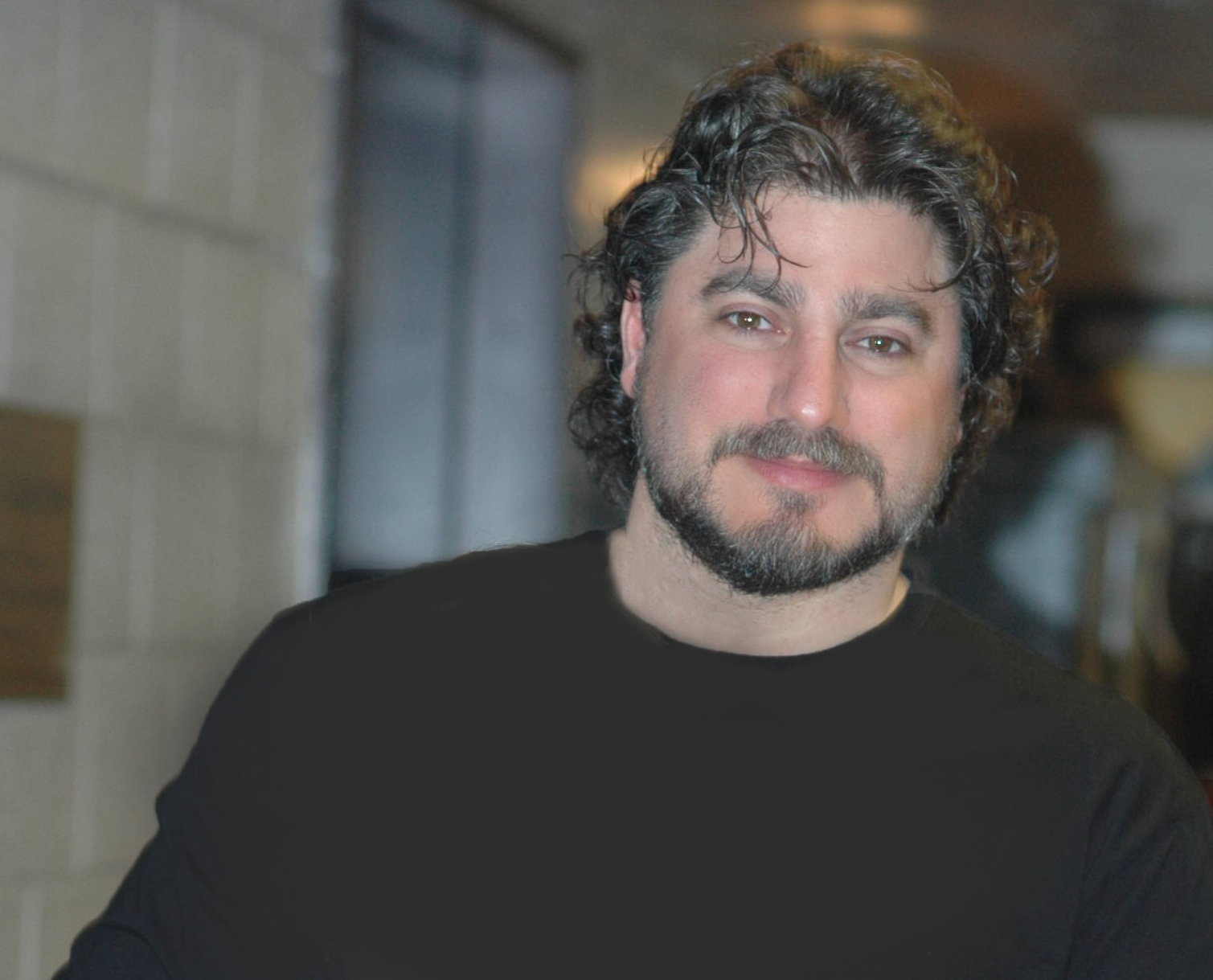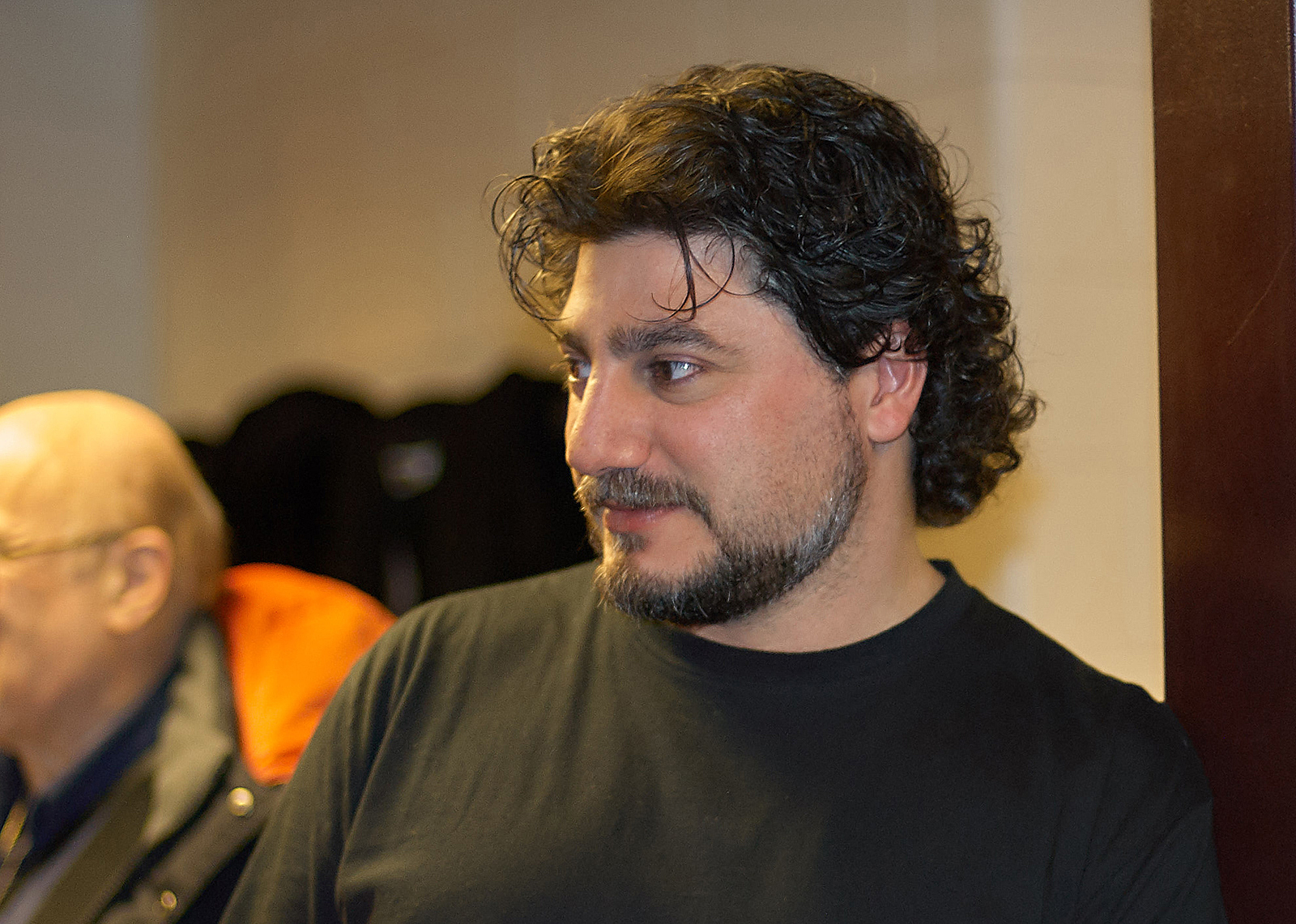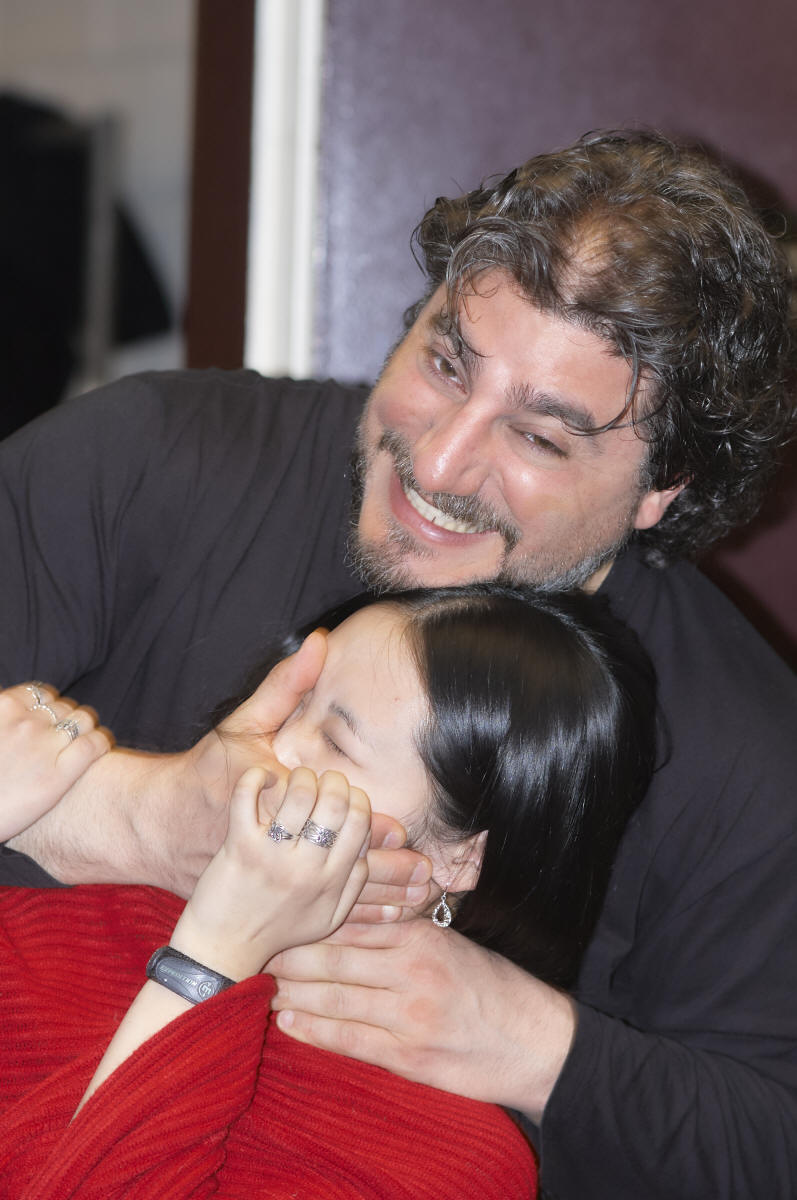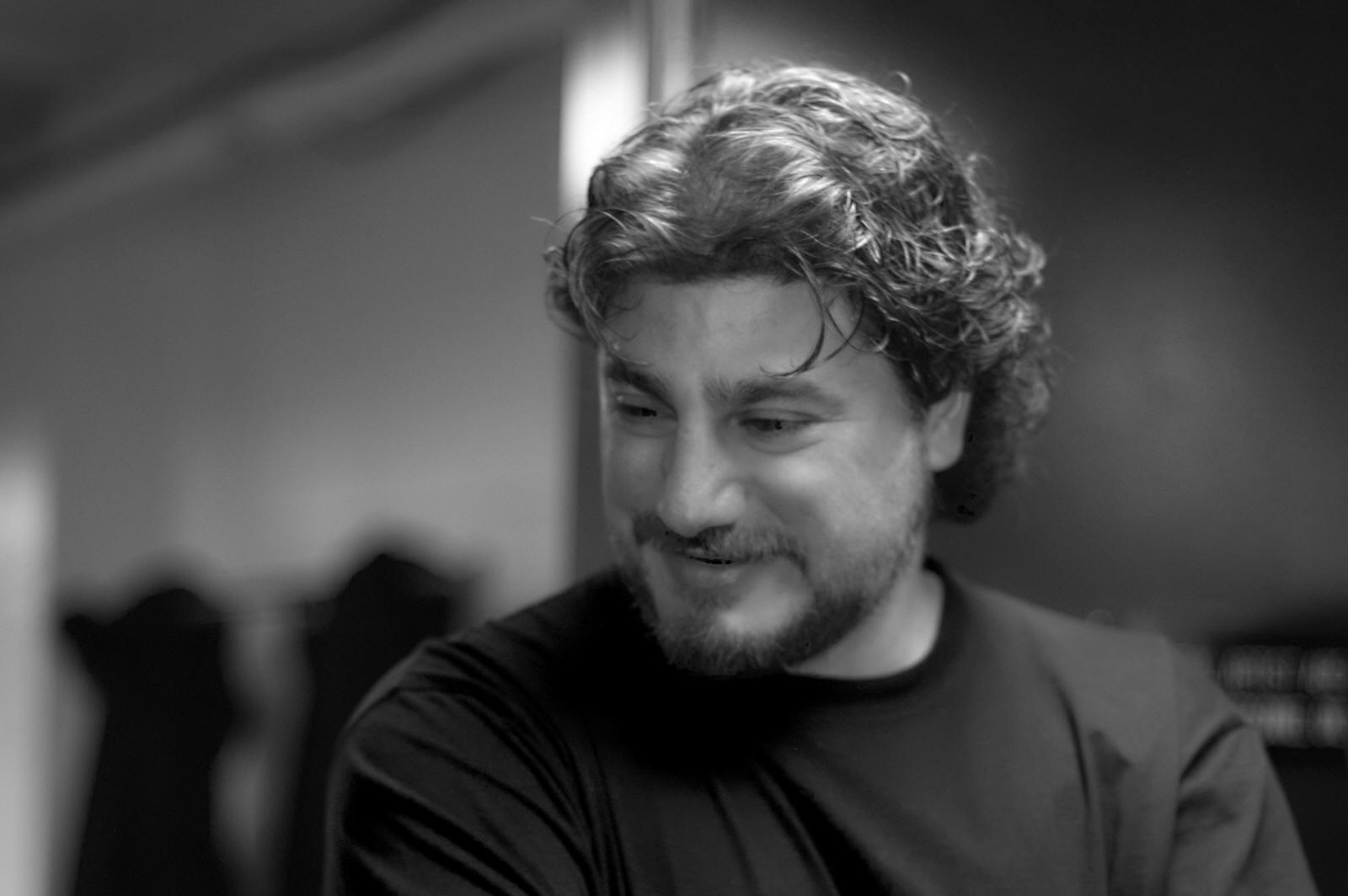

|
|
| Reviews “José Cura is a very strong Samson: his dark tenor is in good shape with a ringing power, and he is an actor of fearless physicality.” The Times, 15 March 2004 “Really any production of the work needs only a persuasively butch Samson. José Cura answers the first need to a T, and, furthermore, since I last saw him in the role he has developed an amazing capacity to sing quietly, so that his assurances to Dalila after she had opened her heart to his voice that 'Je t'aime' were positively murmured. Mostly, though, he was singing at full throttle, and sounding superb.” The Spectator, 27 March 2004 “José Cura [brings] youthful vigour to this testing role. The dashing Argentinian finally seems to be shedding his tendency to play shamelessly to the gallery, not least to his blue-rinse groupies. In this incarnation, Cura is wholly convincing, even moving during the treadmill scene, edging me reluctantly towards a rare use of that dodgy critical word 'definitive'.” The Observer, 21 March 2004 “Samson … is a difficult role to fill; Cura does a good job. His voice is darker than it was last year, almost as if he was conjuring a sound suitable for the old testament prophet. Act 3 opens with Samson alone, chained to the mill wheel. Here Cura was on tremendous form...his strong performance was a striking contribution to the evening. He gave a wonderful variety of tone color, as he had done throughout the opera, and he made a profoundly moving figure. Cura's final contribution, bringing with it the collapse of the Philistine temple, brought the evening to a triumphant close.” Music and Vision, March 2004 “The Argentinian José Cura now ranks as one of the world's top Samsons. Large and muscular, he looks ready to topple any old temple and moves with the sass of one who knows as much his remorseful Act III aria, when shorn and eyeless in Gaza he turns the mill, had real force.” The Evening Standard, 15 March 2004 “José Cura makes a forthright tenor noise as Samson and judges his histrionics with taste.” Financial Times, 15 March 2004 “José Cura reacts to Denyce Grave’s Dalila as one spellbound, tracking her every move with his huge eyes, fondly her body at every opportunity. His Samson is at once a sensualist and a fanatic, a man in whom desire and spiritual conviction burn with equal, violent intensity. He responds to Graves’s seductions with honeyed whispers and captures Samson’s mental and physical agony with frightening vividness in the closing scenes.” Guardian, 15 March 2004 “José Cura gives a performance of great power; the chemistry is just right between these two great singers. It is not always so, but when it happens, it produces sparks of magic.” What’s On, 24 March 2004 “Argentinian José Cura, arguably the most gifted spinto tenor of his generation, has wonderful moments. He is sturdy and handsome as the Israelite champion…” The Stage, 18 March 2004 “Cura found the meaty core of his dark, masculine tenor (and he looked ideal for the role).” Opera Japonica, 13 April 2004 “It has to be said that [Denyce Graves] and her Samson, José Cura, looked really comfortable with each other. The body language of their fateful tryst was the one great lie that the production made believable - her deceit, his desire. Cura looks great in the role - and he sounds pretty good, too. The swarthy complexion of the voice has always been his strong selling point. And that's what counts in this role - middle-voice masculinity.” The Independent, 17 March 2003 "...Lastly, there was José Cura, commanding of aspect and with a nice line in suffering and staggering for the Act 3 solo. It would be churlish to linger on the mannerisms but surely he needs to iron out those now near-persistent swoops up to the note for 'expressive' effect. These tics are doubly frustrating when they accompany such splendid vocal and musical gifts, such tremendous focus at the top of the voice, and a matching ability to sing quietly and beautifully when the music needs it. By the end of the Act 2 love duet, I was teetering, almost willing to believe this opera worthy of the extravagant praise some continue to heap on it." Opera, May 2004 “[From Cura] out of nowhere comes a burst of splendidly heroic singing or the fine etching of a sensitive musical point.” The Telegraph, 16 March 2004 |
|
|
|
How the fit and fabulous stay that way: José Cura, 41
Times Online Rosie Millard March 20, 2004
How fit does an opera singer have to be? These days you can’t get away with being unfit on stage. When I was younger, I was a semi-professional body-builder and I also trained as a kung fu fighter. But when I was 24 I gave it all up as I had a vision of what I might become. I couldn’t even touch the back of my head because my arms were so massive. Now I just work out on machines at the gym in my home in Madrid and when I am travelling I try to stay in hotels with gyms. Did you aspire to be the next Arnold Schwarzenegger? He was the hero for us all; him and Lou “Incredible Hulk” Ferrigno. Of course they look like babies compared with today’s bodybuilders. You’re also a composer and a conductor. Do you ever worry about trying to do too much? When you have two or three talents, you have to decide whether to just use one and hide the others. The music world is fond of labelling people, but at the end of your life you will have to explain to that being who gave you your talents why you were so cowardly as to not use them all. Ah, the famous ego. Some critics have had a bit of a field day at your expense. I used to care what the critics said. I used to suffer, especially when the criticism was suspiciously bad. But I would rather not talk about it except to say that people always criticise eclecticism. As an opera singer do you have to stick to a strict regime? Because I was a semi-professional athelete for many years I learnt how to eat well. Before a show I have a big plate of pasta, for energy. What with make-up and singing, then all the after-show business, you can be working for five hours at a stretch. Ever tuck into the steaks? I was a vegetarian for about five years in my twenties, then one day I woke up and thought it wasn’t too smart to lose my barbecue. But when I was a vegetarian I weighed 20kg (44lb) less. Champagne or sparkling water? I don’t drink. Well, I have a finger of wine when I eat meat, but I can’t handle any more than that. If I do, I start talking nonsense. I guess the smokes are out of the question? Actually I smoke a pipe when I’m at home. It’s not something I can’t do without, but it’s pleasant. I never smoke in London. The air is polluted enough already here. You are quite physical on stage. Have you ever suffered for your art? No, but in the past I’ve had many injuries, particularly to my back and knees because of all my weight training. Yet thanks to all those years in the gym I have a miraculous cardiovascular system. My heartbeat is 52 to 54 at rest. When I go on stage it reaches only 80 beats, which is akin to resting for other people. It gives me a huge advantage — I am never out of breath. Do you pop any pills? Now that I’m in my forties I take supplements including vitamin E for hair and nails and vitamin C in winter. How do you cope with the nerves? When you cross the stage for the first time each night you need to be a little nervous. That’s normal and good and it helps to break the ice with the audience. Naturally good looking or do you attack the make-up? I’m a Neanderthal man as far as my face is concerned, but all that heavy make-up that I have to wear when I am on stage does it no good. Every so often my wife insists that I go to a spa and have a facial. Do you sleep well at night? Now I am 41 I have achieved mental peace. I don’t worry about what people think. I have found audiences are ready to take the love I give them on stage. And I try to live my life as intensely as I can, knowing that it’s the only one I have. What spurs you on? The goal is always the same, to be a Renaissance man. If I were only a singer, I’d be more relaxed. I’d go to the movies on my days off. But I’ve decided to complicate my life with conducting and a recording company and composing. I’m also a keen photographer and I’m going to publish some of my photographs in a book. José Cura is performing at the Royal Opera House, Covent Garden (020-7304 4000), in Samson et Dalila until March 25
Forgotten Heroes by José Cura (interview with Charlotte Cripps)
always admire those who work quietly behind the scenes, behind the mask. I came back to the Royal Opera House to sing in Samson et Dalila and as I walked through the corridors and saw all the make-up artists, the dressers, the stage managers, assistants and so on, I came to the conclusion of how little we know about these people behind the curtain. I felt these were my forgotten heroes because I can't be on stage without them. But how do I put this group of people in one person? The Lone Ranger is symbolic of all the people not in the limelight, doing a lot but whom you may never know. José Cura – Interview Classic FM
‘I’d been conducting for several years before I discovered I had a good singing voice. I decided to take singing more seriously, as it’s easier for a singer to get inside the international picture than a conductor, and if you are a tenor, even better—and if you are a dramatic tenor, even better still. ‘I’ve worked hard over the years. I recently turned 40 and I don’t recall a period when I haven’t studied very hard. People have often commented that I look effortless when I sing, but it’s because I’ve practiced very hard. It’s like watching a dancer do a major jump and you know it’s very tough and challenging, but when they are in the air, they smile and you think it must be easy. ‘Ever since I started singing, I’ve been filmed, so I have learned to adapt my physical gestures to the dryness of the camera. I think my past as a sportsman has been very important for my breathing technique. You must make it look as natural as possible. I hope to do more and more conducting, but it’s just like starting at the beginning again. There are many preconceptions going against me, as it’s hard to make everyone believe that a tenor can be a conductor. There’s an idea that a singer is not a real musician, but I want to change that. ‘I didn’t want to start conducting in an opera house, so my first concert was a challenging programme of Respighi, Kodaly, and Rachmaninov. One day I will sing less and conduct more, but I want to continue singing until my last breath. I’d also like to work with young people. I’m very excited to have my own label, which started by accident, really. We recorded the Rachmaninov for fun, then realized we could do something with it. We didn’t have the back-up support, though, so we made our own label! I don’t know what we will do next, but whatever happens, it’s going to be a nice adventure.’
|
|


|


NYC - 2005
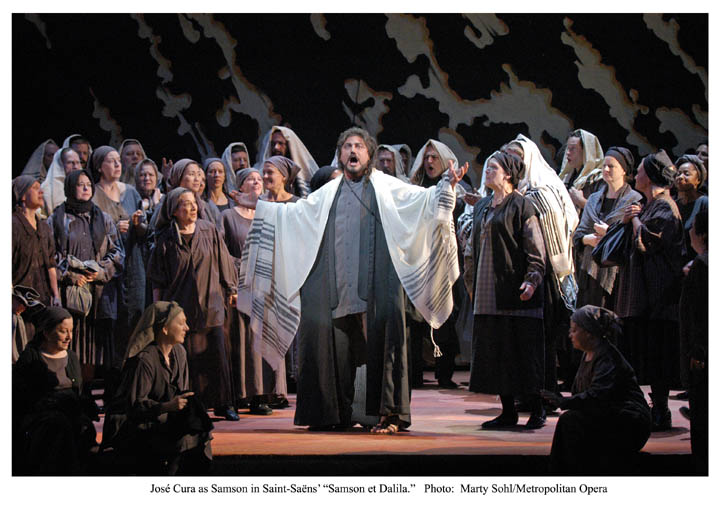
Reviews
|
Samson et Dalila, New York City, April 2005: ‘The Samson of the tenor José Cura, returning to the Met for the first time since his debut performances as Turiddu in Cavalleria rusticana in 1999, is the big news of the revival. The 42-year-old Argentine tenor has had an unorthodox career, which began with extensive training as a conductor, choral director and composer. He was 30 before he committed to a career as an operatic tenor. With his powerful voice, hunky physique and animal magnetism he quickly developed an ardent following. Vocal purists may still fault his singing for its lack of finesse and the sometimes patchy quality of the legato phrasing. But the clarion power and burnished colorings of his voice offered exciting compensations. Clearly a solid musician, he sang with rhythmic integrity and admirable dynamic shadings. Still, it was sheer vocal willpower and dramatic risk-taking that gave his portrayal such impact. During the love scene, he sang Samson's climactic top notes lying on his back with Ms. Graves cuddled over his chest. In the prison scene, when Samson, blinded, shorn of hair and sapped of power, turns the mill wheel to which he is chained, Mr. Cura captured the pitiable state of this broken man through his halting steps and anguished singing. Mr. Cura's Samson is the reason to take in this revival.” New York Times, April 2005
Samson et Dalila, New York City, March 2005: “Samson is a real hero of this opera and José Cura was the main attraction in these performances. His Samson is a charismatic Israelite leader, a warrior as well as Dalila's former lover. The beginning of Act III was the most dramatic, impressive and convincing moment of this staging. The captured, betrayed, shorn and blinded Samson turns the millstone, shackled to it. Effective lights illuminate the tragic leader who betrayed his nation because of his love for Dalila. Samson asked God to save the Israelites and to punish only him. His aria ‘Vois ma misere, helas!’ was one of the strongest moments in the opera. Cura is not only an extraordinary vocalist but thanks to his experience as a conductor and a universal musician, he's a rare example of a thinking tenor. That's something!” Kamerton, April 2005
Samson et Dalila, New York City, March 2005: “Saint-Saëns' orgy music inspired many a Biblical movie score, and there is a touch of Hollywood in the Met's show—most notably, in the persons of tenor José Cura and mezzo Denyce Graves. He is tall and strapping; she is regal and voluptuous; both are comely and command the stage. There is chemistry between them, as when Graves' Dalila strokes and nuzzles Cura's resistant Samson, who then follows her beckon like a helpless child. Bloodied and battered with his arms outstretched, Cura's Samson at the millstone resembles Jesus on the cross—a plausible image by the standards of Christian typology, which sees Samson's sacrifice as prefiguring Christ's. While Cura's acting was affecting, his singing was uneven. Back at the Met for the first time since his 1999 debut, he showed few signs of artistic decline or growth. His voice is dark and beautiful in its lower and middle ranges; he tends to bark his way through high phrases (though he nailed his final B-flat); and his enunciation is cloudy. His vocalism ranged from disciplined (a stirring rebuke to the Hebrews in Act I) to willful (crooning and gasping in the millstone scene).” Newsday, February 2005
Samson et Dalila, New York City, March 2005: “To his first Met Samson, Cura brought a portrayal in which spontaneous vocalism was tempered with earnest depth, both in the hero’s devout faith and in the conflict he suffered for his weakness for Dalila. Given the physique du role and a voice of heroic strength, the Argentinian tenor could encompass both rueful piety and volcanic resources of energy. With his direct manner and unruly, almost experimental technique, Cura is an exciting singer who breathes both life and thought into a character. He immersed himself in the role, putting to expressive use the arresting rough edges of his full-throated sound. In Act I, he acted and sang with restraint before rising to eloquence as he exhorted his people. Faced with Dalila, he wrestled his inner demons, emotional turmoil revving like a dramatic engine. In Act III, only sincerity and fervor saved him from hamming it up as he played out Samson’s despair in defeat. When he rose at the last moment to find himself again, the resurgence of his strength was palpable.” Opera News, May 2005
Samson et Dalila, New York City, March 2005: “Argentine hunk José Cura, whose 1999 Met debut as Turiddu proved severely disappointing, finally returned to the company with a stronger––if still uneven––effort. His Samson, in execrable French––how can such an ambitious artist permit himself this lapse?––commands heroic stature physically and, at least in the upper register, vocally, making his visually committed, dynamic assumption theatrically impressive, even if the tone itself was often unbeautiful and the technique varied puzzlingly from effective to peculiar, phrase to phrase. Cura fared best with the anguished intensity of the third act.” Gay City News, 31 March – 1 April 2005
Samson et Dalila, NYC, February 2005: “When José Cura arrived at the Metropolitan Opera in September 1999, he became the first tenor since Enrico Caruso in 1903 to be given a debut at the house's opening night of the season. But after his three performances as Turiddu in Cavalleria rusticana over an eight-day span that fall, Cura stayed away from the Met, building his career as a singer and conductor in Europe. He returned triumphantly this week in the Met's revival of Saint-Saëns' Samson et Dalila, displaying the clear, robust voice and steamy good looks that have earned him acclaim. Based on Thursday night's performance, the second in a run of seven through March 19, the 42-year-old Argentine has become a major artist. Cura combined with mezzo-soprano Denyce Graves for a moving love scene in the second act, when both took turns singing while lying on their backs. With blood on his face and his voice filled with pain, he was thrillingly dramatic as he turned the mill at the start of the third act, after his hair had been cut and he had been blinded. His French phrasing occasionally sounded less than perfect, but that didn't detract from the overall portrayal. In the post-Three Tenors era, he is among the most exciting tenors around.” Associated Press, 25 February 2005 |
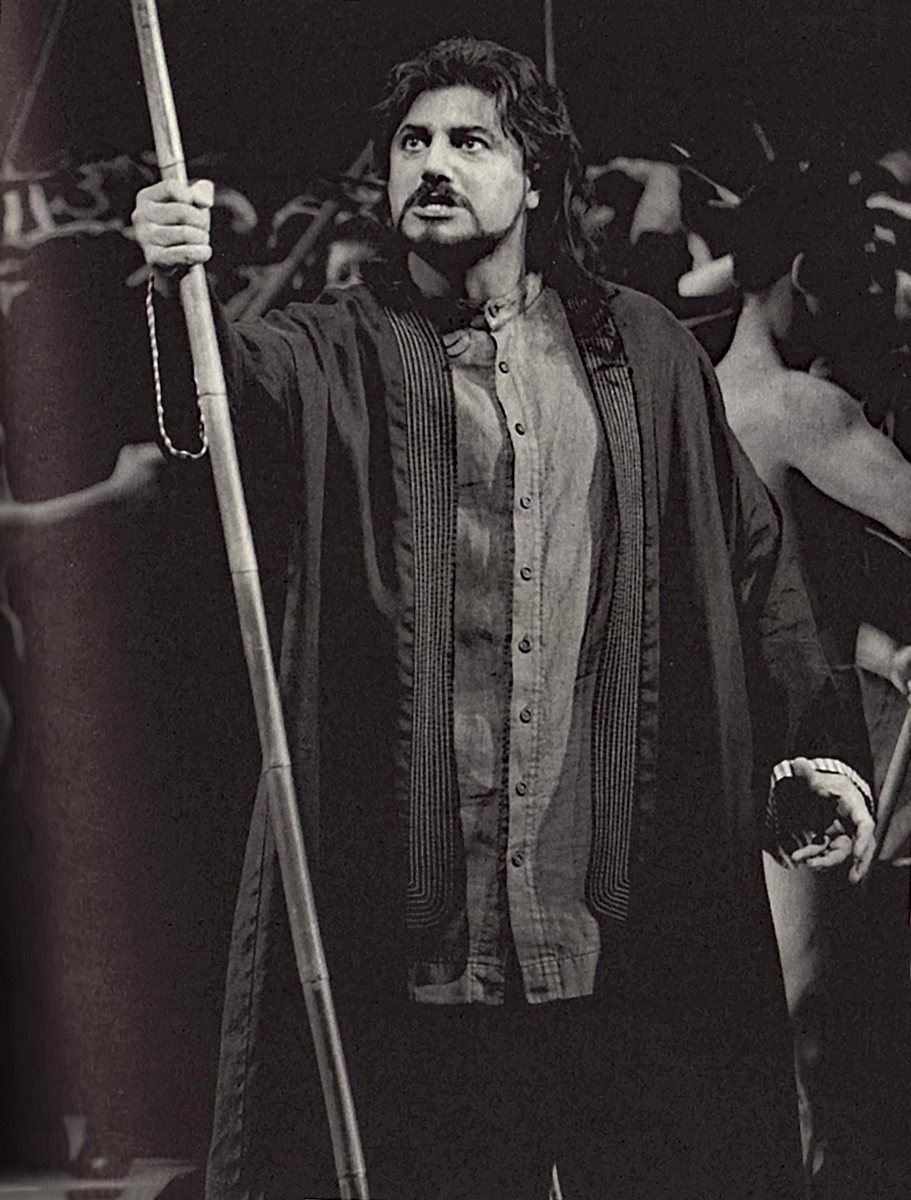
|
Cura Returns to Met
Associated Press 25 February 2005
[Excerpt] NEW YORK - When Jose Cura arrived at the Metropolitan Opera in September 1999, he became the first tenor since Enrico Caruso in 1903 to be given a debut at the house's opening night of the season. But after his three performances as Turrido in "Cavelleria Rusticana" over an eight-day span that fall, Cura stayed away from the Met, building his career as a singer and conductor in Europe. He returned triumphantly this week in the Met's revival of Saint-Saens' "Samson et Dalila," displaying the clear, robust voice and steamy good looks that have earned him acclaim. Based on Thursday night's performance, the second in a run of seven through March 19, the 42-year-old Argentine has become a major artist. Cura combined with mezzo-soprano Denyce Graves for a moving love scene in the second act, when both took turns singing while lying on their backs. With blood on his face and his voice filled with pain, he was thrillingly dramatic as he turned the mill at the start of the third act, after his hair had been cut and he had been blinded. His French phrasing occasionally sounded less than perfect, but that didn't detract from the overall portrayal. In the post-Three Tenors era, he is among the most exciting tenors around.
|
|
|
|
|
Love Me Tenor
New York Post Ernesto Lechner 23 February 2005
A Want more? The Argentinian tenor, who will perform at the Met throughout February and March reprising his critically acclaimed lead role in Camille Saint-Saens's "Samson et Dalila," is also getting ready to publish his first book of photographs. No wonder critics accuse Cura of being an arrogant, self-proclaimed Renaissance man - a claim that he is quick to dismiss. "It's not arrogance," he exclaims. "I think you need to be humble in order to admit that you have a number of talents and you're ready to suffer greatly in order to develop them." Cura discovered his gift for singing almost by accident. A native of Rosario, a picturesque city in the province of Santa Fe, Argentina, he landed his first conducting gig when he was 15. "I discovered the power of my own voice when I was taking singing lessons at the conservatory as part of my degree," he explains. "Some people stimulated my growth while others tried to stunt it. Things became easier when I moved to Europe." The tenor, who names "Samson" and Bizet's "Carmen" as his two favorite operas, has no qualms about facing the commercial realities of the highly competitive classical music business. "By singing opera, I became a better conductor," he offers. "You have to be realistic and realize that you are also a product within a market that has specific needs. If you try to invent your own reality, I don't think you'll last long." True to this philosophy, Cura opened his own record label in 2001. The company is branching out this year to include artist management and special events production. The tenor is not alone in this - his wife of 25 years acts as the company's general manager. "I was walking in downtown New York with my secretary the other day, wondering about my need to further complicate my life with more new projects," he says. "That's what happens to you when you have a restless temper. Even if I had a 50-hour day, it would feel short to me."
|
|
|
|
|
|
|
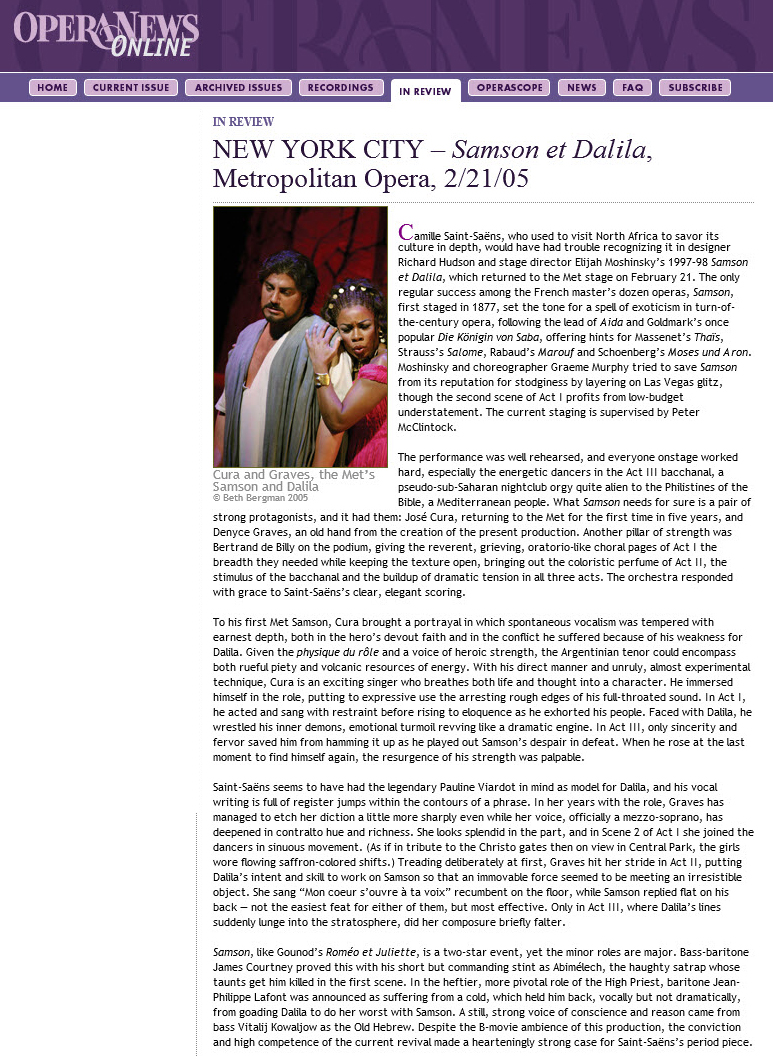 |
|
|







 You’ve
been described as the “Fourth Tenor”. Is it difficult to always hit
the high notes?
You’ve
been described as the “Fourth Tenor”. Is it difficult to always hit
the high notes? 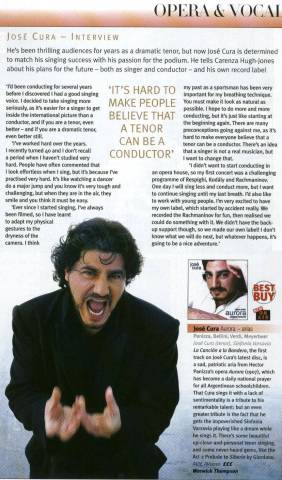 He’s
been thrilling audiences for years as a dramatic tenor, but
now José Cura is determined to match his singing success with
his passion for the podium. He tells Carenza Hugh-Jones
about his plans for the future - - both as singer and conductor
He’s
been thrilling audiences for years as a dramatic tenor, but
now José Cura is determined to match his singing success with
his passion for the podium. He tells Carenza Hugh-Jones
about his plans for the future - - both as singer and conductor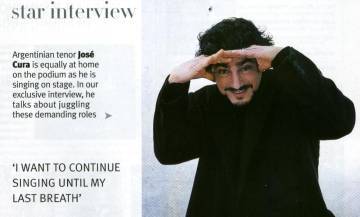






























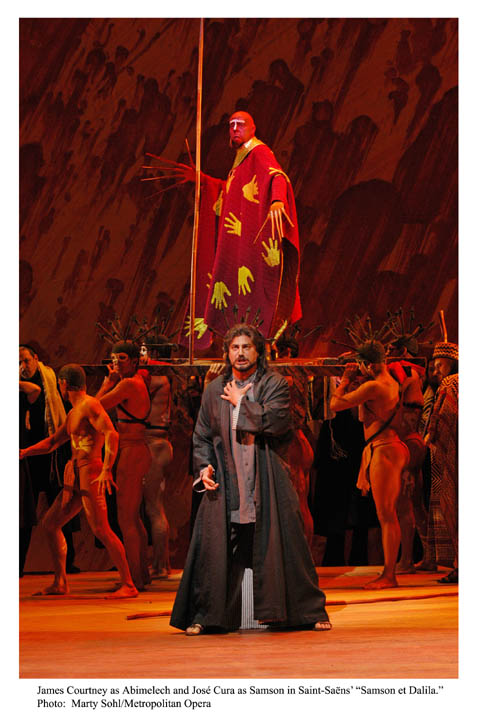
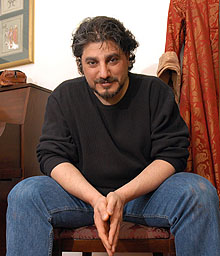 t
42 years of age, Jose Cura is an internationally acclaimed opera singer,
orchestra conductor and multi-instrumentalist.
t
42 years of age, Jose Cura is an internationally acclaimed opera singer,
orchestra conductor and multi-instrumentalist. 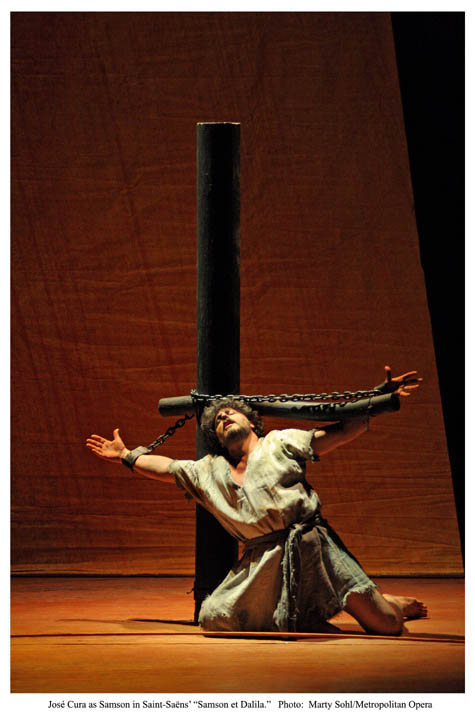
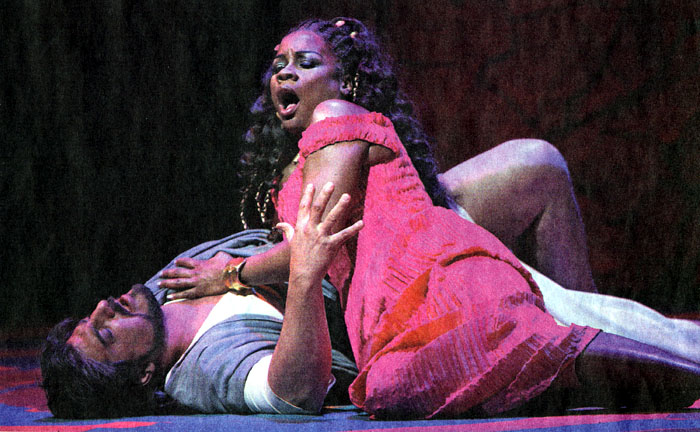

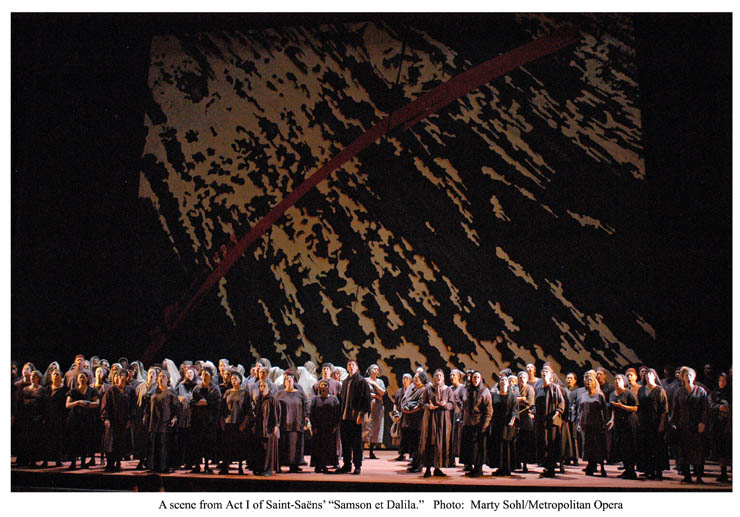

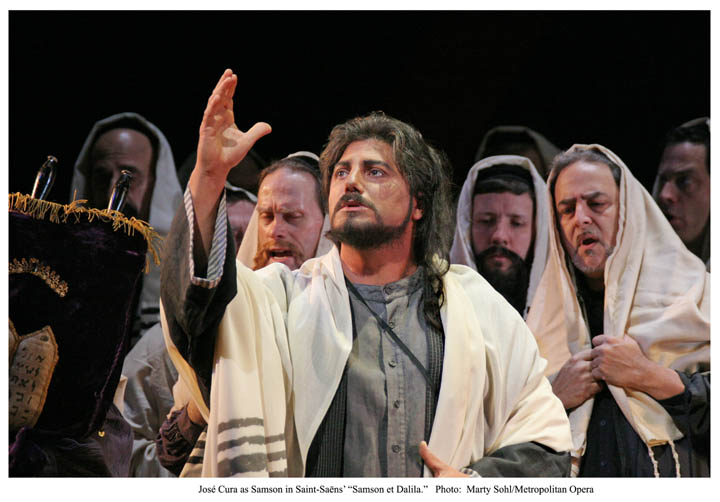
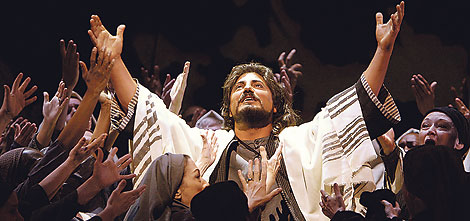
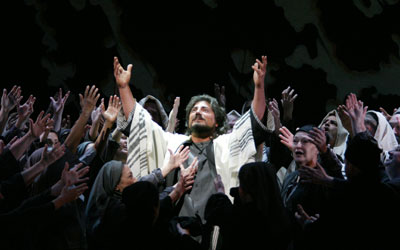

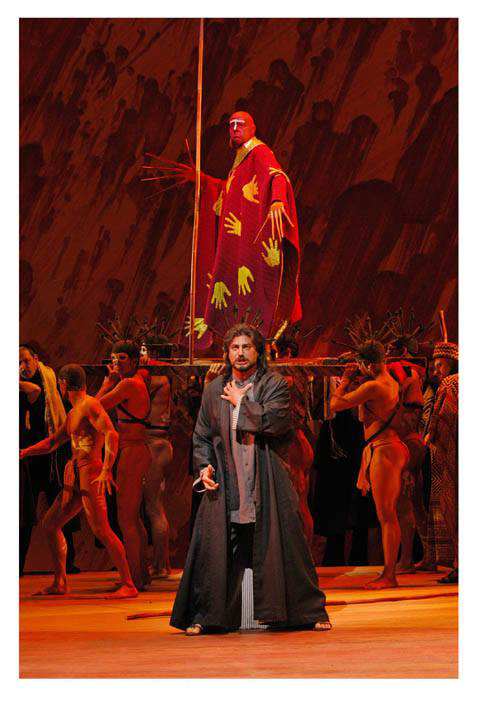
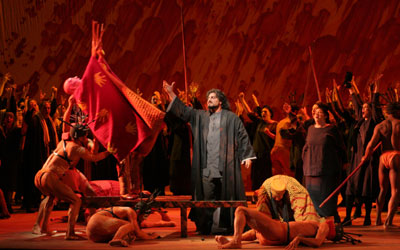
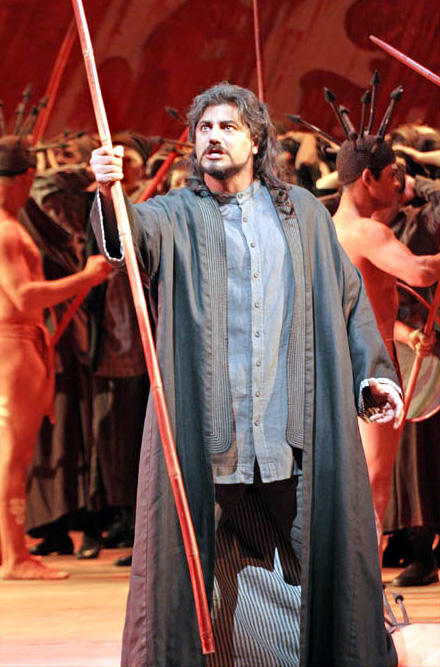

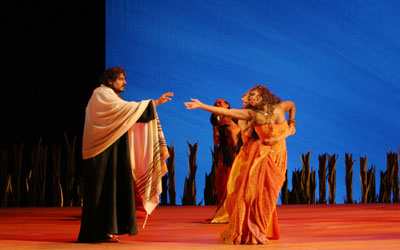
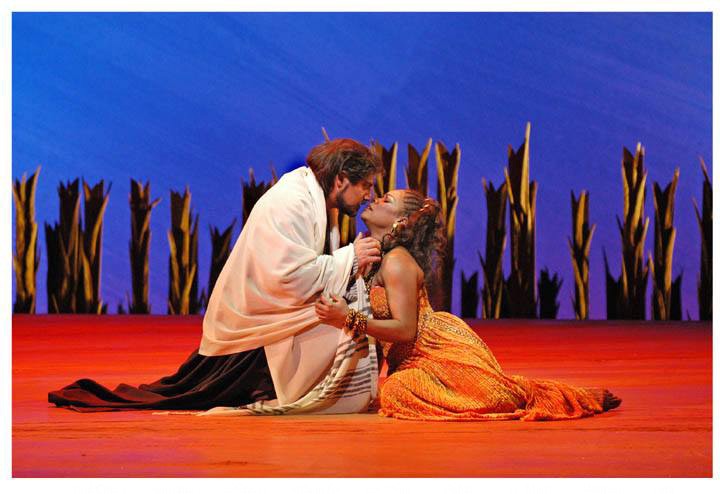
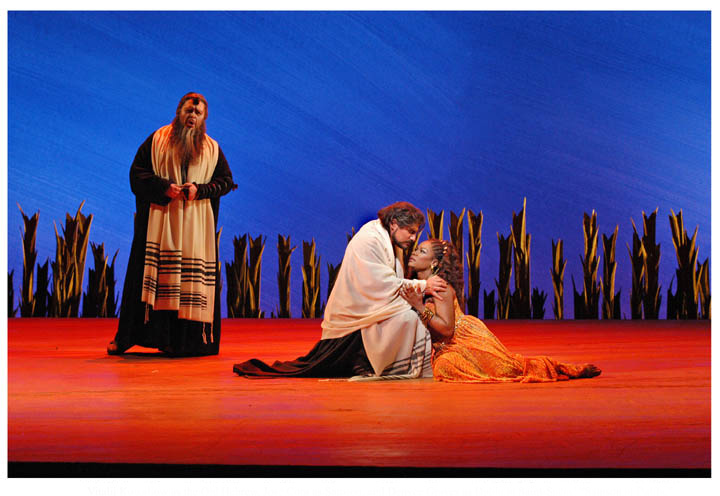
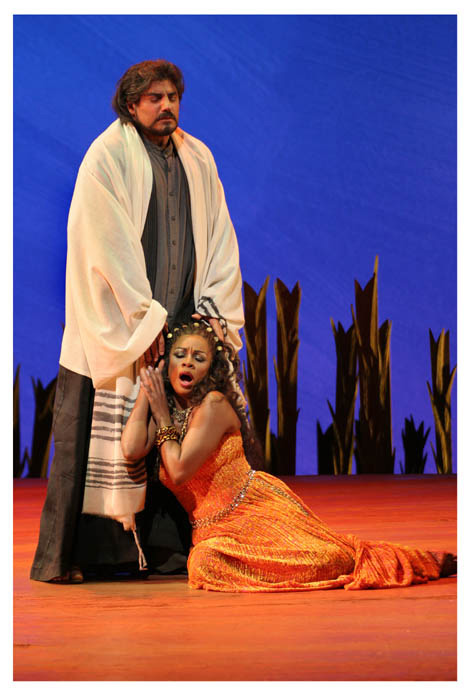
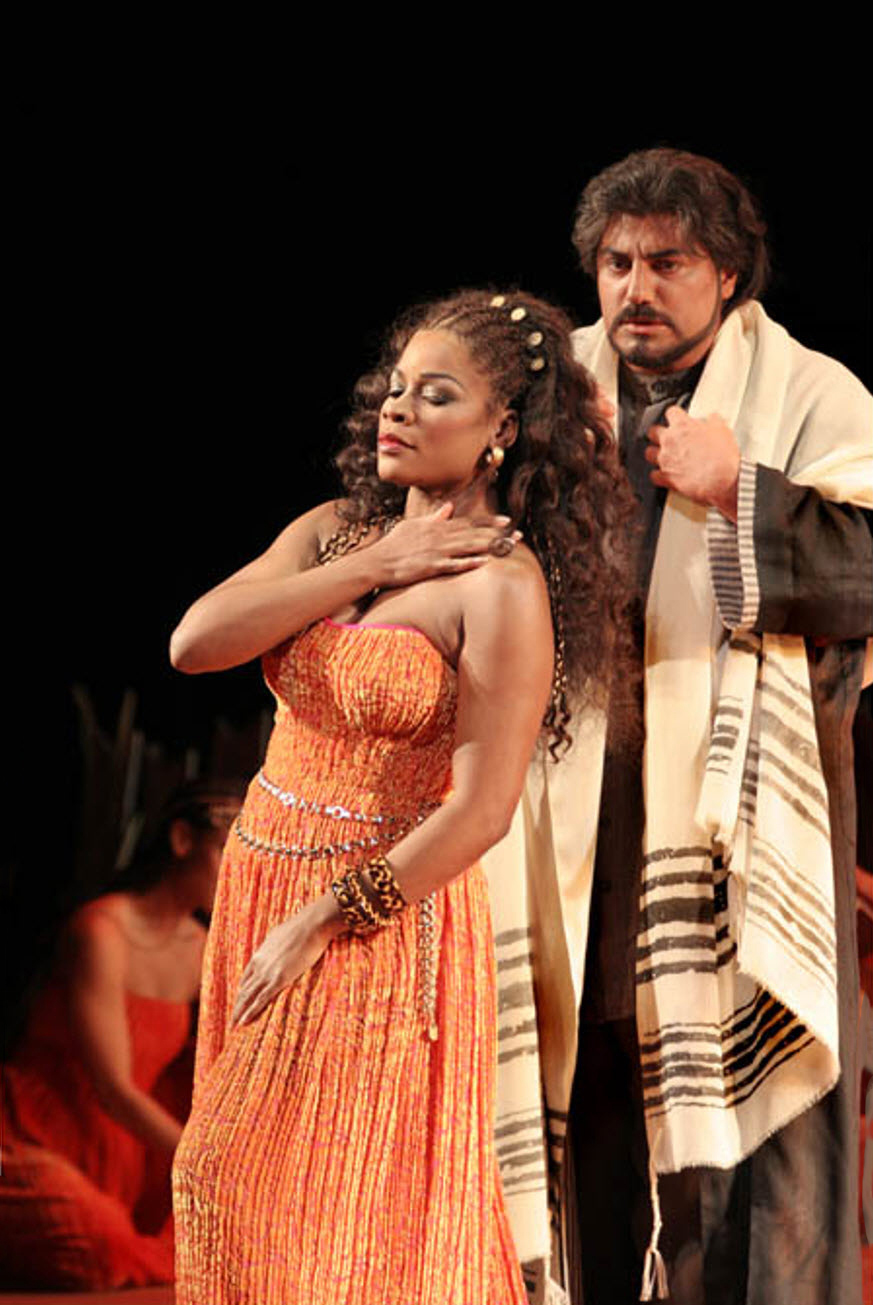
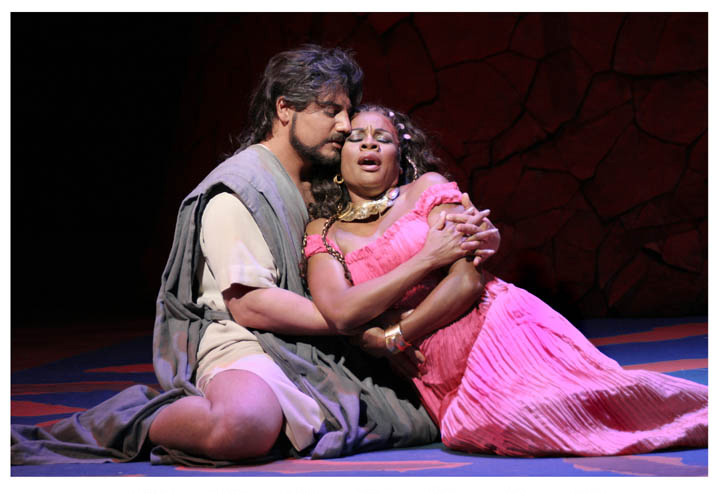
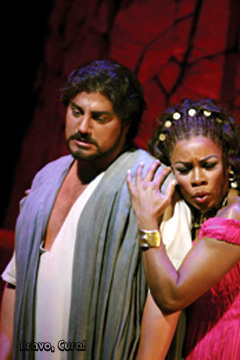
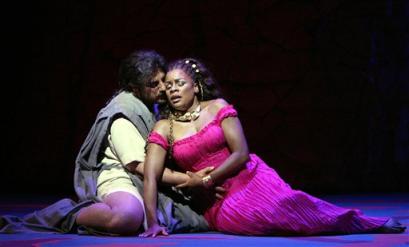
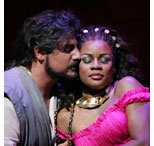
.jpg)
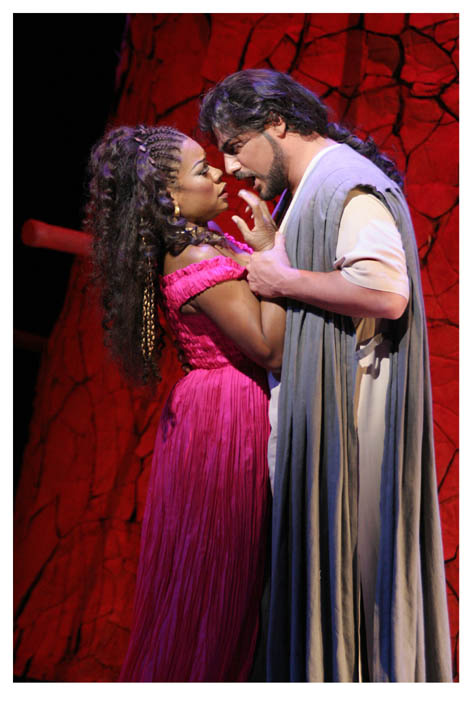
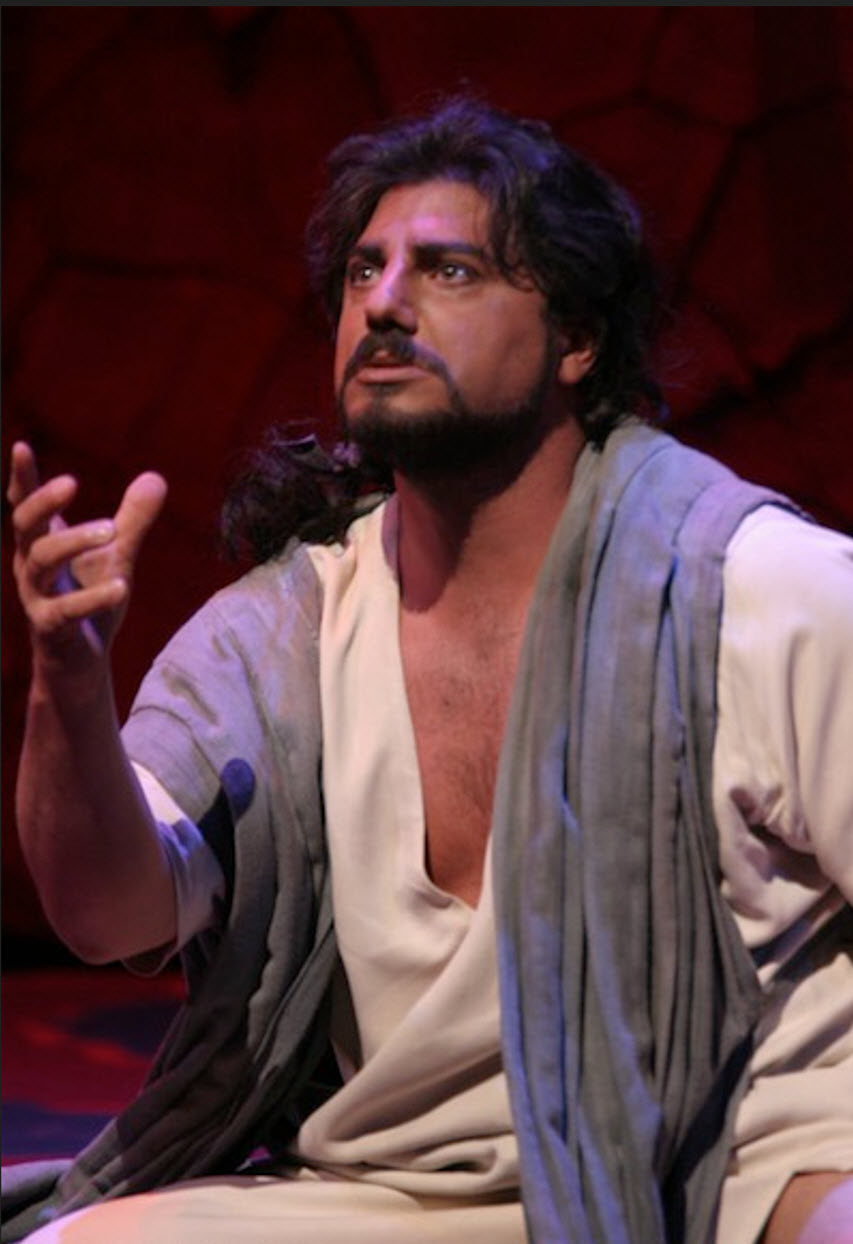
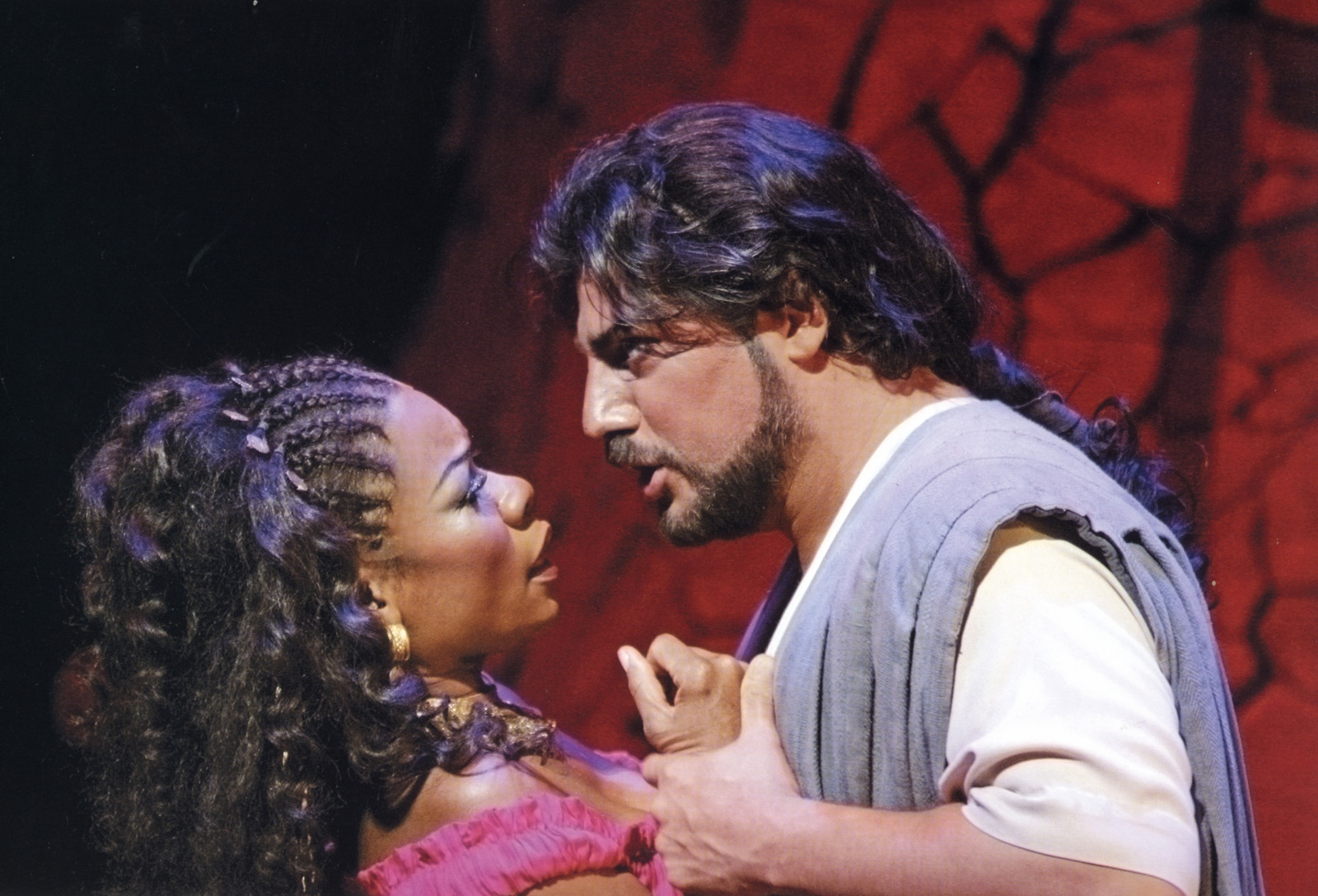
.jpg)
